- All Resource

PPT Templates
Single slides.
- Pitch Deck 210 templates
- Animation 326 templates
- Vertical Report 316 templates
- Business 804 templates
- Finance 56 templates
- Construction 45 templates
- IT/Commerce 171 templates
- Medical 64 templates
- Education 45 templates
- Lifestyle 398 templates
- Pitch Decks 138 templates
- Business 542 templates
- Finance 20 templates
- Construction 75 templates
- IT/Commerce 73 templates
- Medical 27 templates
- Lifestyle 578 templates
- Pitch Decks 140 templates
- Business 469 templates
- Finance 19 templates
- Construction 64 templates
- IT/Commerce 72 templates
- Medical 29 templates
- Education 39 templates
- Lifestyle 490 templates
- Cover 266 templates
- Agenda 97 templates
- Overview 216 templates
- CEO 28 templates
- Our Team 142 templates
- Organization 48 templates
- History 38 templates
- Vision, Mission 109 templates
- Problem, Solution 193 templates
- Opportunity 154 templates
- Business Model 158 templates
- Product, Services 299 templates
- Technology 65 templates
- Market 155 templates
- Prices 56 templates
- Customers 55 templates
- Competitor 113 templates
- Business Process 151 templates
- Analysis 222 templates
- Strategy 120 templates
- Marketing, Sales 61 templates
- Profit, Loss 69 templates
- Financials 247 templates
- Timeline 122 templates
- Proposal 40 templates
- Contact Us 272 templates
- Break Slides 16 templates
- List 361 templates
- Process 351 templates
- Cycle 177 templates
- Hierarchy 98 templates
- Relationship 152 templates
- Matrix 86 templates
- Pyramid 67 templates
- Tables 145 templates
- Map 96 templates
- Puzzles 163 templates
- Graph 217 templates
- Infographics 436 templates
- SWOT 111 templates
- Icon 418 templates
- Theme Slides 138 templates
- Mockup 42 templates
- Column 315 templates
- Line 199 templates
- Pie 139 templates
- Bar 179 templates
- Area 130 templates
- X Y,Scatter 16 templates
- Stock 59 templates
- Surface 3 templates
- Doughnut 256 templates
- Bubble 65 templates
- Radar 83 templates
- Free PPT Templates 2,101 templates
- Free Keynote 2,017 templates
- Free Google Slides 2,098 templates
- Free Theme Slides 35 templates
- Free Diagram 126 templates
- Free Chart 49 templates
- New Updates
Result for ' asset management '
650 Templates are available.
- Sort by Accuracy
- Sort by Newest

Performing Arts management Templates Design
Easy to edit and customize Easy to change colors Creative slides Free images and artwork Drag & drop friendly

management Consultants PPT Presentation
100% fully editable PowerPoint slides Built-in custom color palette All images included Professional business presentation Data charts editable via Excel Modern layouts based on master slides

asset management design template
Modern, simple, and clean design Possible to change shape and color properties Best investors pitch deck Startups & Business executives Professional business presentation

Personal asset management slide design
Easy editable data driven charts (pie, bar, line) Possible to change shape and color properties Created by professionals For professionals and educators Premade color variation

Financial management Simple Templates Design
Quick and easy to customize Shapes and text are 100% editable Easy to customize without graphic design skills Startups & Business executives Modern and clean design

Successful Project management Best PowerPoint Presentations
Shapes and text are 100% editable Replaceable the image into placeholder Created by professionals Modern business plan Startups & Business executives

Financial management company profile template design
Modern, simple, and clean design Easy to change colors Free font used Perfect themes for business or educational. All elements are editable

Construction management PPT Templates
Easy customization 100% fully editable PowerPoint slides Creative slides 100% vector (fully editable maps, infographic, icons) All images included Easy color change Modern layouts based on master slides

Smart Financial management Professional PPT
Easy to customize without graphic design skills Premium & modern multipurpose Best investors pitch deck Creatively crafted slides Professional business presentation

ESG management Solution Business slides presentation
Presentation photos are included; Possible to change shape and color properties Professionally designed infographic templates Rich, clean & modern slide Dark & light backgrounds

Financial management design ppt template
Modern, simple, and clean design Best investors pitch deck Ready to use presentation slides on data analytics Color, size, shading etc. can be modified Professional business presentation

Database management PowerPoint Layout
Quick and easy to customize Completely editable presentation template Ready to use presentation slides on data analytics Professional business presentation Shapes: fully editable vector graphics

Project management App school presentation template
100% fully editable PowerPoint slides Professionally designed Created with high quality slides Modern and clean design All elements are editable

Business management PPT Templates
Easy to change colors Shapes and text are 100% editable Replaceable the image into placeholder Professional business presentation

K-POP Entertainment management Interactive PPT
Quick and easy to customize Shapes and text are 100% editable Easy to customize without graphic design skills Drag & drop friendly

management Process PPT Layout
100% fully editable PowerPoint slides Easy color change 16:9, 4:3 aspect ratios Replaceable the image into placeholder Rich, clean & modern slide

management Analyis Single Layout
Master layout with text placeholders Drag & drop image placeholders Easy to edit and customize All images included 2 aspect ratios (4:3 & 16:9)

Ownership & management Slide Layout
our team member profile with sns, strong team, meet our team, affiliates, management team, team, meet the team, our team, our team members

The management Team Single Layout
strong team, meet our team, affiliates, management team, team, meet the team, our team, our team members

Risk management Strategies Single Deck
Matrix, Risk Management, Promotion Strategy, Project Strategy, Strategy Execution, Strategy, Target Strategies, Estimated profit and loss statement
1 / 33 page
Free Slides
Slide Members
All Rights Reserved 2024 © Copyright Slide Members
Information
- Privacy Policy
- Terms & Conditions
Recent Slides
- 26+ Latest weekly update Powerpoint Templates & Google slides
- 19+ Recently Powerpoint Templates & Google slides Update
- 9+ New Powerpoint Templates & Google Slides Update
Home PowerPoint Templates Business PowerPoint Templates Asset Management PowerPoint Template
Asset Management PowerPoint Template
Download our Asset Management PowerPoint Template to present the strategies by which your company carries our asset management services. Asset management refers to a set of practices to increase wealth by more investments with a low-risk plan. The risk level and the type of investment depend on the investor’s mindset and age. An asset manager works on behalf of the client to buy or sell investments that have the potential to grow in value. Financial advisors from institutions, investment banks, and independent financial experts can use our template to depict their working methodology and the benefits of hiring them for asset management. This template is 100% editable and can be customized with all PowerPoint versions.
The Asset Management PowerPoint Template starts with an impressive slide containing an image of a laptop user working on data. The following slide is for presenting the table of contents for the presentation . Next, there are different slides that users can utilize to demonstrate:
- Introduction to Asset Management
- Objectives of Asset Management Plan
- Scope & Inventory
- Maintenance Strategies
- Implementation Timeline
- Monitoring and Evaluation
- Conclusion & Key Takeaways
Relevant infographic icons help presenters communicate their messages effectively. The professional design of the template grabs the investors’ attention and enhances the presentation’s impact. A comprehensive explanation of asset management increases your clients’ trust in you, opening up the new door to opportunities. Also, presenters can depict the preventive, predictive, and corrective strategies for asset maintenance using columns and bullets. Using a horizontal timeline diagram , they can showcase their complete implementation plan for working on investments. Moreover, they can also visualize the status of activities in their processes. Professionals can modify the PowerPoint components based on their choice. They can also change the template’s icons, shapes, and other PPT features to fit their needs. Download our template and personalize it now!

You must be logged in to download this file.
Favorite Add to Collection
Details (11 slides)

Supported Versions:
Subscribe today and get immediate access to download our PowerPoint templates.
Related PowerPoint Templates
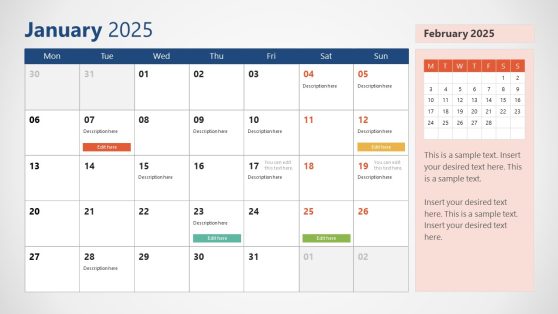
2025 Calendar With Monday as First day

Travel Itinerary PowerPoint Template

Retirement Planning PowerPoint Template
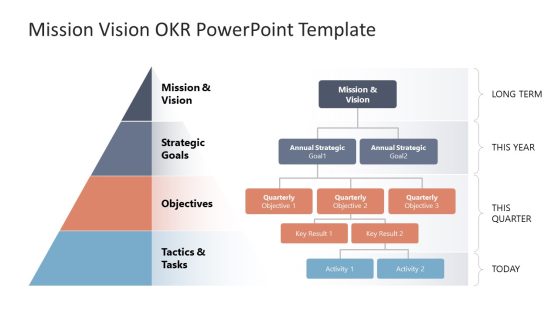
Mission & Vision OKR PowerPoint Template

- PowerPoint Templates
- Google Slides Themes
- Keynote Templates
- Technology and Science
- Education & Training
- Nature & Environment
- Business Models
- Careers/Industry
- Abstract/Textures
- Infographics
- Holiday/Special Occasion
- Construction
- Business Concepts
- Food & Beverage
- Religious/Spiritual
- Utilities/Industrial
- Art & Entertainment
- Financial/Accounting
- Cars and Transportation
- Architecture
- Arts & Entertainment
- Beauty & Fashion
- Food & Drink
- Transportation
- Word Templates
- Letterheads
- Newsletters
- Technology, Science & Computers
- Agriculture and Animals
- Cars/Transportation
- Illustrations
- Backgrounds
- Business and Office
- Education and Training
- Arrows, Shapes and Buttons
- Animals and Pets
- Industry Essentials
- Consumer Electronics
- Objects and Equipment
- Agriculture
- Religious / Worship
- Home Appliances
- Web templates
- Actions and Presets
- Layer Styles
- Become a Contributor
- Presentation Templates
- Graphic Templates
- Asset management
Asset Management PowerPoint Templates & Google Slides Themes
Unlock your presentation potential: explore our collection of professionally crafted free and premium powerpoint templates and backgrounds for instant download, asset management word cloud powerpoint template, the 5 principles of lean management, asset management, asset management diagram, asset management rounded diagram, 3d asset management, flywheel infographics for presentations, 4 ps of business management diagram, company management powerpoint template, operating model canvas for presentation, data excellence model presentation template, example raci chart presentation template, pert chart template - program evaluation review technique, credit risk solution infographics, human resources word cloud powerpoint template, lean services colored word cloud powerpoint template, medical treatment - powerpoint template, real estate pillars infographics, wedding organizer - powerpoint template, animated zigzag journey of swot analysis, financial analysis powerpoint template, inflation lettering powerpoint template, business vector - infographic powerpoint template, 6-step gear diagram design, product life cycle for presentations, agenda presentation - powerpoint template, monochrome portfolio - powerpoint template, portfolio - powerpoint template, yellow modern - powerpoint template, teams section - powerpoint template, human resources - powerpoint template, strategic execution framework presentation template, dynamic investment infographic powerpoint ppt template, brand identity - powerpoint template, 6-step flow process infographics, finance banking - powerpoint template, stock market analysis powerpoint template, fountain pen on the light violet powerpoint template, exchange quotation powerpoint template, investment powerpoint template, australian dollar powerpoint template, account balance powerpoint template, protected savings powerpoint template, financial analysis report powerpoint template, bookkeeping theme powerpoint template, data word cloud powerpoint template, personal improvement powerpoint template, motivation powerpoint template.
- of 2
Download Free and Premium Asset Management PowerPoint Templates
Choose and download Asset Management PowerPoint templates , and Asset Management PowerPoint Backgrounds in just a few minutes. And with amazing ease of use, you can transform your "sleep-inducing" PowerPoint presentation into an aggressive, energetic, jaw-dropping presentation in nearly no time at all. These from free or premium Asset Management PowerPoint Templates and Backgrounds are a great choice for a wide variety of presentation needs.
Our Free and Premium PowerPoint Templates are "pre-made" presentation shells. All graphics, typefaces, and colors have been created and are pre-set by an expert graphic designer. You simply insert your text. That's it!
Free vs. Premium Asset Management PowerPoint Presentation Templates
PoweredTemplate offers a wide range of free Asset Management PowerPoint Presentation Templates. You can find them by filtering by “Free”, from the “Filters” option on the site, on the top left corner of the screen after you search. This content is completely free of charge.
If you download our free Asset Management PowerPoint templates as a free user, remember that you need to credit the author by including a credits slide or add an attribution line “Designed by PoweredTemplate”, clearly and visibly, somewhere in your final presentation.
PoweredTemplate also offers premium PowerPoint templates, which are available only to Premium users. There is no difference in product quality between free and premium Asset Management PowerPoint Presentation Templates.
Best Asset Management PowerPoint Templates
Are you looking for professionally designed, pre-formatted Asset Management PowerPoint templates so you can quickly create presentations? You've come to the right place - PoweredTemplate has created these templates with professionals in mind. At PoweredTemplates, we understand how busy you are and how you love to save time.
That's why we've created a set of PowerPoint design templates with an Asset Management theme. These Asset Management PowerPoint templates are a great choice for a wide variety of presentation needs. Spend your time wisely - download the Asset Management PowerPoint Templates today.
Asset Management PowerPoint Presentation Themes FAQ
What are asset management powerpoint templates.
A PowerPoint template is a pattern or blueprint for your slides that you save as a .pptx or .potx file.
All the Asset Management PowerPoint templates are natively built in PowerPoint, using placeholders on the slide master, color palettes, and other features in PowerPoint, and can contain layouts, theme colors, theme fonts, theme effects, background styles, and even content (according to Microsoft Office).
How to choose Asset Management PowerPoint templates for presentations?
Choose after carefully studying the template features and viewing the big preview images. All the product information is on the product page in the description and a list of the features can be found in the horizontal scrolling bar under the Download button. You may download a few free templates before making the final decision.
Who are Asset Management PowerPoint templates suitable for?
Why do i need asset management powerpoint templates.
- Recently Viewed
You have not viewed any products yet. Start browsing our template library and here will be stored your history of viewed products.
- add all to Favorites
Use "Favorites" to save products you find interesting, to compare them and add to cart. To add products in favorites you must first register or login. Registration is Free! To add a product to "Favorites" simple click on near product's image.
Account Sign In
Create your Free Account
Forgot Password?
Remember me on this computer
Not Registered? Create Free Account
By creating an account I agree to PoweredTemplate’s Terms and Conditions .
Already have an account? Sign in
Got any suggestions?
We want to hear from you! Send us a message and help improve Slidesgo
Top searches
Trending searches

6 templates

indigenous canada
9 templates
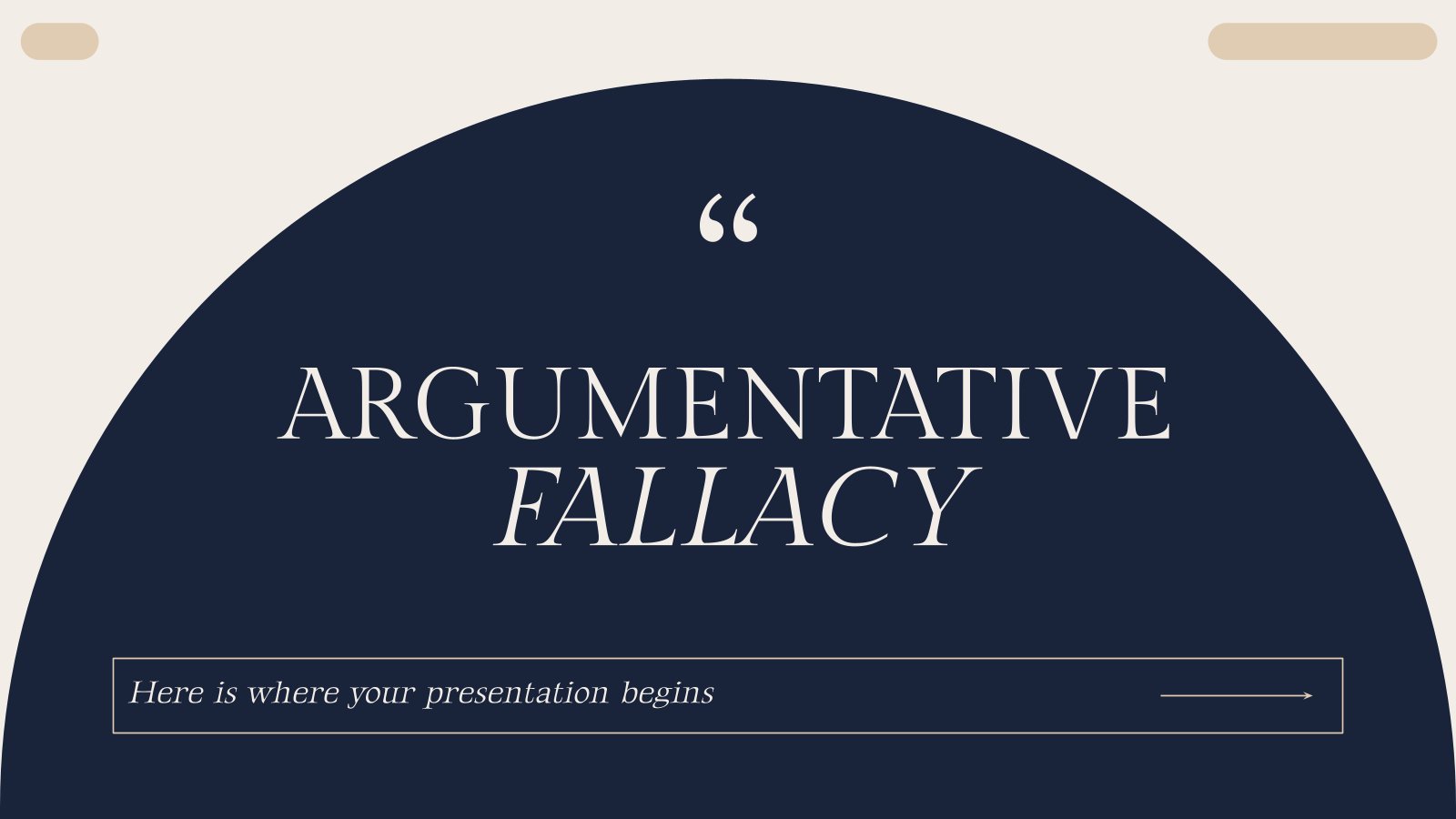
121 templates

education technology
232 templates

28 templates

occupational therapy
Asset management company profile, it seems that you like this template, asset management company profile presentation, free google slides theme, powerpoint template, and canva presentation template.
Giving a good first impression is very important in any setting. So in a business environment it is especially crucial! But don’t worry, we have the perfect template for you: a simple yet elegant design with waves and soft colors with a professional and corporate touch. Present your company profile and modify everything you want to suit your company view to impress your customers!
Features of this template
- 100% editable and easy to modify
- 26 different slides to impress your audience
- Contains easy-to-edit graphics such as graphs, maps, tables, timelines and mockups
- Includes 500+ icons and Flaticon’s extension for customizing your slides
- Designed to be used in Google Slides, Canva, and Microsoft PowerPoint
- 16:9 widescreen format suitable for all types of screens
- Includes information about fonts, colors, and credits of the free resources used
How can I use the template?
Am I free to use the templates?
How to attribute?
Attribution required If you are a free user, you must attribute Slidesgo by keeping the slide where the credits appear. How to attribute?
Related posts on our blog.

How to Add, Duplicate, Move, Delete or Hide Slides in Google Slides

How to Change Layouts in PowerPoint

How to Change the Slide Size in Google Slides
Related presentations.

Premium template
Unlock this template and gain unlimited access

Asset Management
Design Services
Business PPTs
Business Plan
Introduction PPT
Self Introduction
Startup Business Plan
Cyber Security
Digital Marketing
Project Management
Product Management
Artificial Intelligence
Target Market
Communication
Supply Chain
Google Slides
Research Services
All Categories
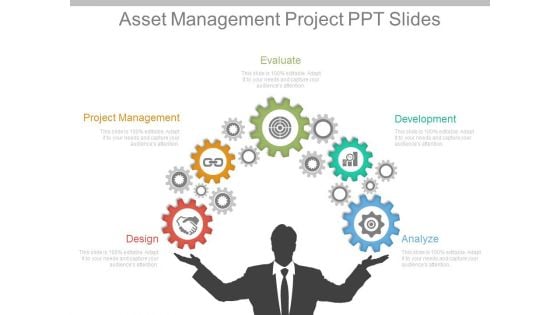
Asset Management Project Ppt Slides
This is a asset management project ppt slides. This is a five stage process. The stages in this process are design, project management, evaluate, development, analyze.
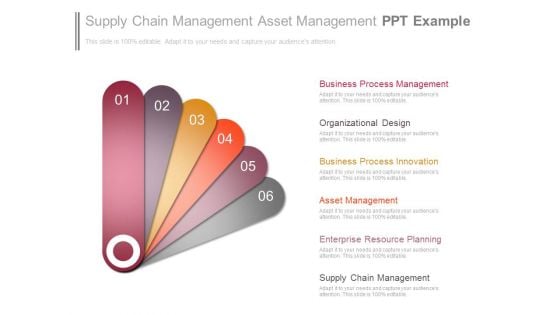
Supply Chain Management Asset Management Ppt Example
This is a supply chain management asset management ppt example. This is a six stages process. The stage in this process are marketing, business. \n \n . \n
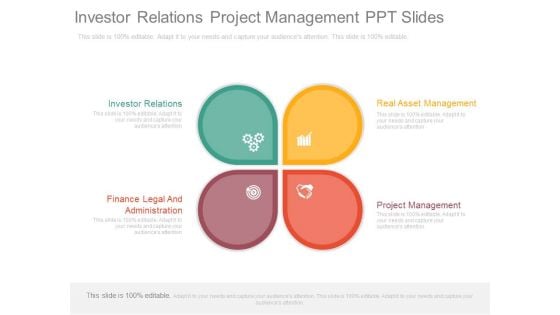
Investor Relations Project Management Ppt Slides
This is a investor relations project management ppt slides. This is a four stage process. The stages in this process are investor relations, finance legal and administration, real asset management, project management.
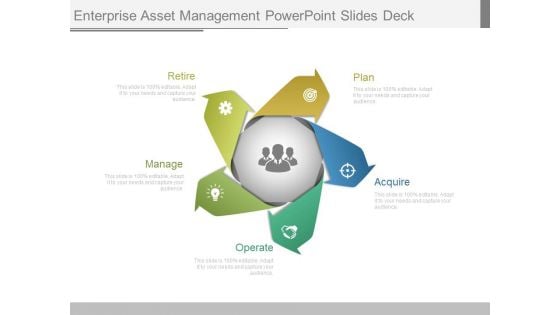
Enterprise Asset Management Powerpoint Slides Deck
This is a enterprise asset management powerpoint slides deck. This is a five stage process. The stages in this process are retire, plan, manage, acquire, operate.

Business Diagram Circular Arrows For Brand Asset Management Presentation Template
This diagram has been designed with graphics of circular arrows. This diagram slide contains the concepts of brand assets management. Download this diagram slide to make impressive presentations.
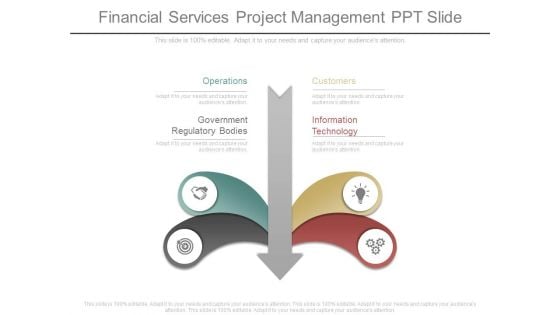
Financial Services Project Management Ppt Slides
This is a financial services project management ppt slides. This is a four stage process. The stages in this process are operations, customers, government regulatory bodies, information technology.
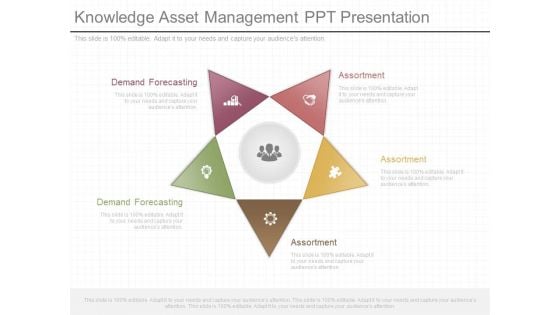
Knowledge Asset Management Ppt Presentation
This is a knowledge asset management ppt presentation. This is a five stage process. The stages in this process are demand forecasting, assortment.
Ratings and Reviews
Most relevant reviews, by vladimir.
May 31, 2021
by Sumit Kumar
June 1, 2021
June 3, 2021
by Shubhangi
June 4, 2021
by Ajay Mohan
June 5, 2021
by Ankita Jhamb
June 6, 2021
by Chetna Sharma
- You're currently reading page 1

See us at Cultivate’24 | July 13-16 | Columbus, OH

- Inventory Management
- Order Management
- Freight Management
- Truck Driver App
- Dock Door Scheduling
- Reporting and Analytics
- Asset Management
- Human Resources
Argos Software and Services
ABECAS Insight software and services are built and delivered around a core base of tools.
- ABECAS Insight
- Implementation
- Support & Consulting
Argos Software Industries
We offer both industry-specific and general software modules to meet a wide variety of business requirements, all built atop a financial accounting core.
- 3rd Party Logistics (3PL)
- Nursery, Greenhouse, & Growers
- Warehousing
- Asset-Based Trucking
- Cold Storage
Integration
- Shipping Integration
- EDI Integration
- API Integration
Argos Software Resources
- Trade Shows & Events
- White Papers
About Argos Software
It’s the best software for running a small-to-medium sized business or a division of a larger company where the focus is on understanding and controlling costs as a path to increased profitability.
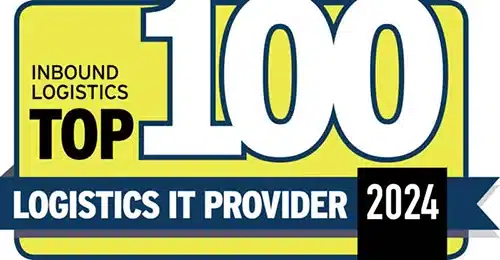
- Our History
Recent Blogs

Procurement Guide: Mastering Strategic Sourcing and Management
By Christen Thomas | 2024-05-31T19:11:26+00:00 May 31, 2024 |

Top Cannabis Software Features to Optimize Your Business for Growth
By Christen Thomas | 2024-06-10T08:40:42+00:00 April 16, 2024 |

The Essential Guide to Business Asset Management
By Christen Thomas | 2024-06-18T17:44:34+00:00 April 3, 2024 |
- Search for:
Christen Thomas
April 3, 2024

In today’s rapidly evolving business landscape, the efficient management of both physical and infrastructure assets stands as a cornerstone of operational success. Business asset management, a discipline that extends beyond the financial management of stocks and bonds, encompasses the strategic oversight of all valuable resources within an organization. This broad spectrum includes everything from tangible machinery and facilities to intangible assets like software and intellectual property. Effective management of these assets is crucial, not only for safeguarding them but also for optimizing their use to drive business growth and performance.
The significance of both physical asset management and infrastructure asset management cannot be overstated. As businesses across various sectors grow and integrate advanced technologies, the assets they rely upon become increasingly sophisticated and interconnected. This complex web of assets presents a challenge: ensuring they contribute positively to the bottom line through a comprehensive strategy that goes beyond mere inventory or maintenance. It involves creating a robust system where assets are monitored and managed from procurement through to disposal, thus ensuring they deliver maximum possible value throughout their lifecycle.
This guide aims to provide professionals across all industries with the insights and strategies necessary to excel in asset management. By adopting a holistic approach to the management of both tangible and intangible assets, organizations can unlock new levels of efficiency, sustainability, and competitive advantage. Whether you are in logistics, manufacturing, tech, or any field in between, mastering the principles of asset management is key to navigating the complexities of today’s business environment and securing a prosperous future.
Understanding the Basics of Asset Management
What is asset management.
At its core, asset management is the holistic approach to overseeing every asset within an organization to maximize value and minimize costs and risks. These include both physical or tangible fixed assets and non-physical, or intangible assets. This practice differs significantly from personal or financial asset management, focusing instead on the tangible and intangible assets that drive business operations forward. It involves a strategic blend of procurement, utilization, maintenance, and disposal to ensure each asset’s optimal performance and contribution to the business goals.
Types of Assets
A thorough understanding of the various types of assets under management is essential for developing and implementing effective asset management strategies. Generally, assets can be categorized into three broad groups: physical and infrastructure assets, intangible assets, and digital assets. Here’s a closer look at each category:
- Machinery and Equipment: Essential for manufacturing processes, maintenance work, and more.
- Vehicles and Fleets: Used for transportation, logistics, and delivery services.
- Buildings and Facilities: Encompasses office spaces, warehouses, and manufacturing facilities.
- Infrastructure: This subcategory includes the vital systems and structures that support a company’s operations, such as power grids, water and sewage systems, and communication networks. Infrastructure assets are crucial for both public services and private sector operations, requiring comprehensive management and strategic planning to ensure their reliability and efficiency.
- Software Licenses and Patents: Protect and provide exclusive rights to use innovative technologies and processes.
- Trademarks and Brand Recognition: Crucial for marketing, customer recognition, and establishing a reputable brand identity.
- Intellectual Property: Encompasses proprietary research, designs, and creative work. Managing these assets involves legal protections, licensing agreements, and strategic deployment to safeguard and leverage their value.
- Data and Information: Customer databases, analytical reports, and operational data that drive decision-making and strategic planning.
- Digital Content: Marketing materials, digital products, and online content that require management for copyright, distribution, and monetization.
By recognizing the diverse nature of assets, businesses can tailor their asset management strategies to address the unique challenges and opportunities each type of asset presents. Effective asset management ensures that physical, infrastructure, intangible, and digital assets are not only protected but also optimally utilized to contribute to business growth and sustainability.

Core Components of Effective Asset Management
Asset inventory and documentation.
One of the first steps toward achieving effective asset management is establishing a comprehensive asset inventory and maintaining detailed documentation. This process involves creating a systematic record of every asset owned by the business, including both tangible or fixed assets, and intangible assets. For tangible assets, this would encompass details such as serial numbers, purchase dates, costs, and current locations. For intangible assets, it includes licenses, patents, and copyrights, along with their acquisition dates and values.
The importance of maintaining this inventory cannot be understated. It serves as the backbone of any asset management strategy, enabling businesses to track the status and performance of their assets throughout their lifecycle. Additionally, well-kept documentation aids in compliance with regulatory standards, financial reporting, and strategic planning. It also simplifies the process of asset verification, valuation, and insurance.
Asset Tracking
In today’s digital age, the methodologies for tracking physical and digital assets have evolved significantly. Beyond traditional barcode systems and RFID tags, businesses now leverage GPS trackers, IoT sensors, and cloud-based software platforms for real-time asset monitoring. These technologies provide instant visibility into the location, condition, and performance of assets, facilitating proactive management.
Real-time asset tracking allows businesses to respond swiftly to changes in asset status, reducing downtime and preventing losses due to theft or misplacement. Moreover, integrating this data with asset management software can automate maintenance schedules, update asset records, and inform decision-making processes. For digital assets, software solutions can monitor usage, ensure compliance with licensing agreements, and protect intellectual property rights.
Lifecycle Management
Understanding and managing the lifecycle of an asset is central to maximizing its value and efficiency. Lifecycle management, whether for physical or infrastructure assets, or intangible assets, encompasses the stages from asset acquisition, through its operational use, to its eventual disposal or renewal. By strategically managing each phase, businesses can extend asset life, optimize their use, and ensure their assets remain a source of value rather than a cost burden.
- Acquisition: Making informed decisions about which assets to acquire, considering not only the purchase price but also the total cost of ownership, including maintenance, operation, and potential resale value.
- Operation: Ensuring assets are utilized effectively, maintaining them in good working order, and making adjustments as business needs change.
- Maintenance: Implementing scheduled maintenance and adopting predictive maintenance strategies to prevent failures and extend asset lifespan.
- Disposal or Renewal: Deciding when it’s more cost-effective to retire an asset and replace it, considering its residual value, the cost of continued maintenance, and the benefits of newer technology.
Maintenance Scheduling and Management
Regular maintenance is critical to extending the lifespan of assets, ensuring they perform efficiently and reducing the likelihood of unexpected breakdowns. Advanced techniques in maintenance scheduling, such as predictive maintenance, leverage data analytics and IoT sensors to anticipate failures before they occur, scheduling interventions only when necessary.
Choosing between in-house and outsourced maintenance involves weighing the cost and expertise associated with each option. While in-house teams provide control and rapid response, outsourced partners can offer specialized skills and scalability. Whichever choice is made, it’s essential to integrate maintenance activities into the broader asset management strategy, ensuring they contribute to overall business objectives and asset performance optimization.
In these sections, we’ve outlined the foundation of effective asset management, focusing on inventory documentation, tracking technologies, lifecycle strategies, and maintenance practices. As we move forward, we’ll explore additional aspects that contribute to a holistic asset management approach, including financial management, technological advancements, and strategic practices for risk management and compliance.

Depreciation Tracking and Financial Management
Depreciation tracking is a crucial component of managing fixed assets, allowing companies to understand the diminishing value of their tangible assets over time. This process is not just about compliance with accounting standards; it’s a strategic tool that informs decisions on asset maintenance, replacement, and disposal. By accurately tracking depreciation , businesses can ensure they’re making informed investment decisions, optimizing their tax benefits, and maintaining accurate financial records.
Financial management in asset management extends beyond depreciation tracking. It encompasses the total cost of ownership (TCO) analysis, investment planning, and the alignment of asset acquisition with financial goals and capabilities. Effective financial management ensures that assets are not only contributing to operational efficiency but also aligning with the company’s broader financial strategy, including budgeting, forecasting, and liquidity management.
Technology in Asset Management
In the realm of asset management, technology plays a pivotal role in enhancing the visibility, efficiency, and control of assets across various industries. The adoption of cloud-based software solutions marks a significant advancement, offering businesses the ability to centralize asset information, streamline processes, and facilitate real-time decision-making. These platforms are designed for scalability and provide remote access, ensuring that businesses can manage their assets effectively, regardless of their size or geographic distribution.
Moreover, the integration of Remote Access Technology (RAT) and other mobile solutions into asset management systems has revolutionized how field personnel, such as drivers and sales teams, interact with assets in real-time. This connectivity ensures that data is consistently updated and accessible, enhancing the responsiveness and agility of businesses in managing their assets.
For instance, systems like Argos Software utilize these technologies to offer comprehensive asset management solutions. By integrating e-mail and file export capabilities, along with the automatic generation and distribution of reports and documents, such platforms ensure seamless communication and efficiency. The ability to define alerts and receive automatic notifications helps businesses stay ahead of potential issues, enabling proactive management of assets.
Additionally, the integration of various external tools and services, including RF and handheld devices, further extends the capabilities of asset management systems. This interoperability allows for the efficient tracking and management of assets, reducing errors and improving overall operational efficiency.
The technology landscape in asset management continues to evolve, driven by the need for greater efficiency, accuracy, and control. As businesses strive to optimize their asset management practices, the adoption of advanced technological solutions remains a critical strategy for achieving operational excellence and competitive advantage.
Strategic Asset Management Practices
Risk management.
Identifying and mitigating risks associated with asset utilization and ownership is paramount in asset management. This includes physical risks to tangible and infrastructure assets, such as damage or theft, and operational risks, such as downtime due to unexpected failures. Effective risk management involves regular risk assessments, the implementation of preventive measures, and the development of contingency plans to ensure business continuity.
Policy and Compliance
Ensuring that asset management practices meet industry regulations and standards is critical for legal compliance and operational excellence. This encompasses everything from environmental regulations and safety standards to financial reporting requirements. Developing clear policies and procedures for asset management not only helps in meeting these requirements but also in standardizing practices across the organization, enhancing efficiency and accountability.
Performance Monitoring and Optimization
Monitoring the performance of assets and seeking ways to optimize their utilization is essential for maximizing return on investment. This involves regularly reviewing asset utilization rates, maintenance costs, and overall contribution to business goals. Performance data can inform strategic decisions on asset reallocation, upgrades, or divestment, ensuring that the asset portfolio remains aligned with changing business needs and market conditions.
Sustainability and Asset Management
Integrating sustainability into asset management practices is increasingly recognized as a key driver of long-term value creation. This includes considering the environmental impact of assets throughout their lifecycle, from acquisition to disposal. Sustainable asset management practices can reduce waste, lower energy consumption, and minimize the carbon footprint of operations, contributing to a company’s social responsibility goals and improving its reputation among consumers and investors.
The comprehensive approach outlined in these sections, from financial management and technology adoption to strategic practices and sustainability, forms the foundation of effective business asset management . As businesses continue to navigate a dynamic operational landscape, the principles and practices discussed here will be pivotal in leveraging assets as strategic tools for growth and competitive advantage.
Implementation and Best Practices
Implementing a robust asset management system requires careful planning, consistent execution, and continuous improvement. Here are key strategies and best practices to ensure the successful deployment and management of an effective asset management framework.
Assessing Your Current Asset Management Maturity
Understanding your organization’s current level of asset management maturity is crucial before embarking on any improvement initiative. This involves evaluating existing processes, technologies, and practices against industry standards or best practices. Tools like maturity models can help identify gaps in areas such as documentation, tracking, maintenance, and financial management, providing a clear roadmap for advancement.
Developing an Asset Management Plan
A strategic asset management plan (AMP) outlines how an organization’s assets will be managed to achieve its overall strategic plan. This plan should include:
- Goals and objectives for asset management.
- Roles and responsibilities within the asset management team.
- Standards and practices for asset acquisition, maintenance, and disposal.
- Strategies for risk management, compliance, and performance optimization.
- A technology roadmap for implementing or upgrading asset management tools and systems.
Change Management
Successfully implementing a new or revised asset management strategy often requires changes to organizational culture, processes, and technology. Effective change management strategies can facilitate this transition, ensuring buy-in from all stakeholders. Communicate the benefits of effective asset management clearly and consistently, provide training to relevant teams, and involve key stakeholders in the planning and implementation process to foster a culture of continuous improvement.
Training and Development
Investing in training and development is essential for building asset management competence within the organization. This includes both technical training on asset management tools and systems, and broader educational initiatives on best practices and principles. Regular training sessions can help ensure that staff are up to date with the latest asset management strategies, technologies, and regulatory requirements.
Leveraging Data and Analytics
In the era of big data, leveraging data analytics is a powerful strategy for optimizing asset management. Data collected from IoT devices, asset management software, and other sources can provide valuable insights into asset performance, maintenance needs, and utilization patterns. Analytics can help identify trends, predict failures, and inform strategic decision-making, enabling organizations to move from reactive to proactive asset management.
Choosing the Right Asset Management Software
Selecting the right asset management software is pivotal to enhancing operational efficiency and achieving strategic asset management goals. Key features to look for include:
- Compatibility with existing systems and technologies.
- Scalability to accommodate business growth.
- Real-time tracking and reporting capabilities.
- Customizable dashboards and reports.
- Support for predictive maintenance and analytics.
Challenges and Solutions in Asset Management
Common challenges.
Asset management teams often face challenges such as data silos, outdated systems, and resistance to change. These obstacles can hinder the effective tracking, management, and optimization of assets.
Solutions and Workarounds
To overcome these challenges, businesses can:
- Implement integrated asset management solutions to break down data silos.
- Regularly review and update asset management technologies and processes.
- Foster a culture of innovation and continuous improvement through training and change management practices.
The Future of Asset Management
Emerging trends.
Technological advancements such as artificial intelligence (AI), machine learning (ML), Internet of Things (IoT), and blockchain could further revolutionize asset management. These technologies offer potential new ways to track, manage, and optimize assets, driving efficiency and value creation.
Preparing for the Future
Staying ahead of emerging trends requires a proactive approach. Organizations should:
- Keep abreast of technological developments and industry best practices.
- Invest in technology and skills development.
- Experiment with new technologies on a small scale before full implementation.
Argos Software: Your Strategic Asset Management Solution
As businesses navigate the complexities of asset management, the need for a comprehensive, adaptable solution has never been more apparent. Argos Software, with its rich history of innovation and dedication to efficiency, presents a robust platform designed to streamline asset management across various industries. Our suite of features is not just a testament to our expertise but a reflection of our commitment to transforming the way businesses manage their assets.
Tailored Solutions Across Industries
Argos Software is engineered to cater to the unique challenges and dynamics of multiple sectors, including 3PL providers, agribusiness, transportation, and more. Each solution is meticulously designed with industry-specific functionalities to enhance operational efficiency and strategic decision-making.
- For 3PL Providers : Argos offers an end-to-end warehouse management solution, embracing advanced features like value-add transactions and storage billing, crucial for the complex demands of a 3PL environment.
- In Agribusiness : From seedling cultivation to stock management and shipping, Argos software provides comprehensive visibility and control, ensuring the seeds of hard work bear fruits of efficiency and productivity.
- Transportation and Freight Management : With features like advanced route optimization and real-time shipment tracking, Argos software is the ultimate tool for efficient logistics management.
Comprehensive Asset Management Features
Our Asset Management suite is a testament to our comprehensive approach, offering:
- Real-Time Asset Tracking and Visibility: Ensure every asset is precisely where it needs to be, when it needs to be there, with our advanced tracking solutions.
- Lifecycle Management: From procurement to disposal, maximize ROI with strategic insights into each asset’s journey.
- Maintenance Scheduling: Automate and optimize maintenance schedules to keep assets in peak condition, reducing unexpected breakdowns and extending asset lifespan.
- Depreciation Tracking: Stay ahead of financial planning with accurate, up-to-date depreciation records, aiding in strategic asset investment decisions.
- Customizable Dashboards and Reporting: Gain a holistic view of your asset portfolio with tailored operational insights, driving informed decision-making.
Why Choose Argos?
Choosing Argos Software means more than just accessing a top-tier asset management solution; it means partnering with a team that understands the nuances of your industry and the challenges you face. Our flexible, modular system allows you to tailor the software to your specific needs, ensuring that you only pay for what you need. Argos is committed to continuous improvement and innovation, ensuring our solutions evolve with your business.
In the ever-evolving world of business, effective asset management is not just a necessity but a strategic advantage. With Argos Software , businesses have a partner poised to elevate their asset management strategy, harnessing technology, industry expertise, and a commitment to excellence. As we look towards the future, Argos remains dedicated to empowering businesses with the solutions they need to manage their assets intelligently, efficiently, and profitably. Join us on this journey to redefine asset management and unlock the full potential of your business operations.
Request a Demo
Discover how Argos Software can transform your asset management practices, streamline your operations, and drive your business forward. Contact us today to request a demo and explore a partnership that grows with you, offering the tools and insights needed to excel in today’s competitive landscape.
Recent Blog

In the fast-evolving landscape of the cannabis industry, the intersection of technology and cultivation has [...]

In today's rapidly evolving business landscape, the efficient management of both physical and infrastructure assets [...]
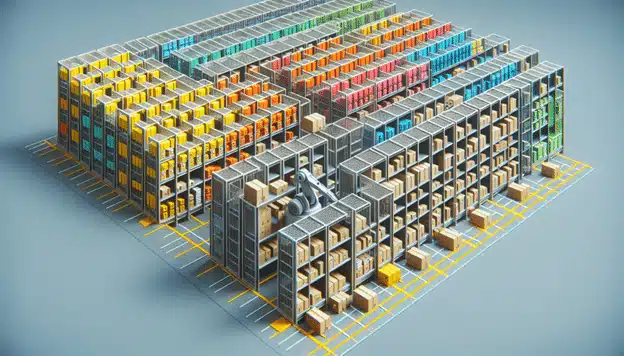
Warehouse Slotting: A Comprehensive Guide to Maximizing Efficiency
Struggling with warehouse organization? ‘Warehouse slotting’ might be your answer. It’s not just about orderly [...]
Table of Contents
Subscribe to Email For Updates

Argos’ ABECAS Insight is all-in-one business management software that’s flexible and modular, offering the functionality of an enterprise (ERP) solution at a fraction of the cost. ABECAS Insight is ideally suited for companies in 3PL, transportation, agriculture, field service, and utility industries, and for small- and medium-sized businesses selling to other companies (B2B).
8770 West Bryn Mawr Ave, Suite 1300 Chicago, IL 60631 [email protected]
+1-888-253-5353 +1-559-227-1000
© 2024 Argos Software. All rights reserved
Privacy Policy | Terms and Conditions | Cookie Policy

Asset Management Presentation Template
Identify the type of assets to be included in the presentation.
- 1 High performance
- 2 Low maintenance
- 3 Long lifespan
- 4 High income potential
Gather data on the identified assets
Assess each asset's performance.
- 1 Routine maintenance
- 2 Reactive maintenance
- 3 Preventive maintenance
- 4 Predictive maintenance
- 1 Excellent
- 4 Below Average
Detail maintenance schedule/requirements for each asset
Analyze the risk factors associated with each asset, outline income generation capacity of each asset, design draft of the asset management presentation, approval: draft design.
- Design draft of the asset management presentation Will be submitted
Review feedback and revise draft presentation
Incorporate relevant graphs or charts visualizing the data, approval: graphic visualization.
- Incorporate relevant graphs or charts visualizing the data Will be submitted
Review and adjust the asset types based on their performance
Prepare final version of the presentation, run practice presentation for team members, approval: practice presentation.
- Run practice presentation for team members Will be submitted
Collect feedback and adjust the presentation as necessary
Schedule the presentation date and time, prepare supplementary materials, review final asset management presentation template, approval: final presentation.
- Prepare final version of the presentation Will be submitted
Take control of your workflows today.
More templates like this.

Nice to meet you.
Enter your email to receive our weekly G2 Tea newsletter with the hottest marketing news, trends, and expert opinions.
What Is Asset Management? Why It's Necessary for Business Success
June 24, 2021
by Keerthi Rangan

In this post
What is asset management, why is asset management important, what is an asset manager, what is asset management software, what is the asset lifecycle, types of asset management, challenges of asset management, benefits of asset management.
Assets are invaluable in all walks of life.
Assets are especially essential parts of the business equation. Although the concept of an asset is broad, it refers to anything that can be controlled and used to either store or produce more value. These include the physical and intangible assets that your company owns.
Tangible assets are physical items such as machines, tools, real estate, vehicles, and more. In addition, intangible assets include intellectual property (IP), databases, operational data, software license agreements, and organizational capital. These assets have a finite value.
The idea of spending time and money on protecting assets that don't generate any revenue may seem like an inefficient use of resources. But as soon as a business grows and scales, the importance of asset management increases proportionally, and ignoring your company's assets can turn into a financial nightmare.
When properly managed, assets can contribute to your company’s growth, financial success, and encourage sustainability. However, poor management practices can hurt your bottom line and potentially hinder or even destroy growth opportunities.
Asset management ensures that your company can continue to grow and expand with the correct use of assets. It will help keep your business on track, manage risk, and more.
Asset management is a systematic process to cost-effectively procure, maintain, upgrade, and dispose of organizational assets. As a result, it enhances asset delivery potential and lowers costs.
The concept of asset management isn’t new or revolutionary, but it has powerful and important applications for businesses. When executed correctly, asset management solves the most pressing concerns plaguing an organization, allowing it to grow more efficiently.
Asset management is a key part of an effective business management strategy. Unfortunately, it's often overlooked as a mundane task that's not very exciting. However, this perception is wrong. Asset management is a critical component of any profitable business, and it provides value to both the organization and its shareholders.
Asset management involves people from all business areas and divisions, from COOs and managers to auditors and engineers, and even IT specialists and equipment operators.
Businesses that invest in asset management reap various benefits. Not all of these benefits are linked to financial gains. Real-time asset tracking produces a constant stream of data, fosters responsibility, and keeps planning and equipment maintenance on track with the help of a suitable asset management system.
Tracking different asset classes (such as fixed assets) with the help of an with the help of asset tracking software eliminates some of the drawbacks of older monitoring systems, such as depending on erroneous data and having no means of knowing where assets are or how they function. In addition, asset management provides businesses a 360-degree view of the entire life cycle of the assets.
Asset management software also automatically save time and resources. Furthermore, enhanced scheduling and automated warnings reduce capital expenditures and save money on maintenance. Thus, total operational expenses decrease while planning efficiency improves.
Such a system facilitates the adoption of a risk management strategy and enhances regulatory compliance. In addition, the accuracy of depreciation rates and asset valuation is also improved.
An asset manager is someone who manages a specific group of assets. The asset manager’s goal is simple: to save money through tracking assets and bring more organization to reduce waste. An asset manager is responsible for developing and executing an asset management strategy, ultimately managing the assets entrusted to them.
Traditionally, businesses have outsourced asset management to asset management companies who act as fiduciaries. However, there has been a slow and steady shift toward in-house asset management with the help of asset managers.
Asset managers employ researchers and analysts responsible for tracking asset performance, providing sound investment advice, and taking care of other tasks that could affect the performance of the assets. In particular, asset managers look for high-growth investment opportunities before anyone else.
Asset managers should know various departments: administration, finance, capital, operations, and have a thorough understanding of a business’ stakeholders and strategic and operational procedures.
Asset management software is a tool that helps businesses make their revenue-generating assets more usable. Particularly those assets crucial to the daily operations of any business.
Asset management software gives a comprehensive perspective of an asset's lifespan, from acquisition to deployment to maintenance and disposal. While an organization might track its assets with a basic spreadsheet, asset management tools allow users to evaluate data relevant to each asset, helping them to make more informed decisions about asset management.
Asset management systems accomplish this by guiding users to keep track of assets, analyze maintenance fees, and extend an asset's useful lifespan. Asset management systems record every detail of an asset and are highly beneficial to an organization. In addition to tracking assets, they may also perform additional services such as:
- Decrease the expenses related to procurement, compliance, and maintenance of assets
- Improve the visibility of all assets
- Maximize the usable life of assets
- Enhance and guarantee compliance
An ideal asset management system will give users the resources they need to manage their complete asset inventory in a single, centralized dashboard. Asset managers can see where the assets are housed, who’s utilizing them, and how.
The number of phases that a business' asset goes through during its operating life cycle is known as the asset lifecycle . It’s a strategic and analytical process during which a company can successfully and productively use an asset to achieve its business objectives.
.png?width=600&name=Asset%20lifecycle%20management%20(1).png)
An asset life cycle is divided into numerous stages and generally encompasses all phases of an asset's life (from acquisition to maintenance and disposal). Thus, each asset has a life cycle that may be broken down into four distinct stages:
1. Planning
The initial stage of the asset life cycle is planning. The asset needs are established and verified at this level. Determining asset requirements depends on a review of current assets and their ability to satisfy customer service demands.
Based on the business and industry standards, the requirements may be combined to produce a hybrid asset precisely suited to an organization's needs. Unfortunately, it’s also the stage where many errors can occur.
If something is set up incorrectly or a computation error is made, it can impact all subsequent phases until the asset is renewed or disposed of, which can take years.
When an organization implements excellent planning at all stages of the asset management cycle, it can:
- Identify over-performing assets and under-performing assets
- Determine if existing assets are sufficient for business needs
- Ensure that assets are well-maintained and accountable
- Discover asset information for in-house assets
- Ensure that assets are accessible when they are needed
- Analyze different asset choices based on financial planning
2. Acquisition
A business can choose the best asset only after it identifies the cost and needs of all the available options. Acquisition planning encompasses all of the processes involved in purchasing an asset to achieve a cost-effective acquisition. This includes tasks such as asset design and procurement. The proper execution of these tasks ensures that the asset is fit to use.
An organization must first determine if the asset will be purchased or built in-house. The next step is to create a budget for asset acquisition and a timeline for purchase. Finally, a realistic budget and cash flow should be designated as deficit funds; otherwise, project management may jeopardize the asset purchase process.
When the above criteria are satisfied, a project team should oversee the process to ensure that all acquisition process tasks are performed to achieve corporate service delivery and other asset investment objectives.
3. Operation and maintenance
The operation and maintenance stage is perhaps the longest stage in asset lifecycle management. It describes how an asset is used and managed, including maintenance, to provide continuous services. Therefore, asset managers should prioritize asset maintenance concerns in their asset management strategy.
For example, long-lived physical assets such as roads and buildings, need specific upkeep throughout their lifespan. Similarly, financial services such as portfolio management need regular upgrades for a positive outcome. Thus, the primary goal of this stage is to maximize asset utilization.
During this period, you should focus on a specific asset for proper maintenance, monitoring, and potential enhancement to avoid operational changes. Upgrades, patch repairs, new license purchases, compliance audits, and cost-benefit assessments are all parts of operation and maintenance.
4. Disposal
When an asset approaches the end of its useful lifespan, it can be regarded as a surplus or an underperforming asset. The renewal or disposal of an asset is the final stage of its lifespan. If an asset is to be disposed of, teams should carefully change the maintenance plan to ensure that mandatory maintenance is performed.
All assets will generate enough data to help firms choose the optimal course of action. However, this information is rarely gathered in a fashion that can help executives or managers make the right decisions. Therefore, an organization should be aware of these essential steps well in advance of the renewal or disposal stages to use the data appropriately.
It's crucial to have a thorough awareness of all essential assets in your workplace. Especially those necessary for wealth management and creation.
For example, a gelato shop owner would collect information on managing their most valuable asset: the refrigerator. An IT asset manager, on the other hand, would keep track of their company's software license compliance to avoid penalties and breaches.
Understanding the different forms of asset management is crucial in selecting a solution that’ll work for you. Here are a few different types of asset management based on their industry sector.
Financial asset management
Financial asset management , often referred to as investment management, is the financial services sector that manages investment funds and segregated customer accounts. While there are other types of asset management based on industry sectors, the term asset management is most commonly used in the financial services industry.
Accounting software helps corporations, governments, and individuals deal with asset management efficiently and adequately. Financial asset management employs specialists to manage funds and customer investments.
Financial asset management can be performed in two ways: actively or passively .
- Active financial asset management: This type of asset management requires active responsibilities ranging from examining customer assets to planning and managing investments. All of this is handled by specialists (such as hedge fund managers or financial advisors), and suggestions are made based on each customer's financial health and risk appetite. As a result, investors pay a higher premium for active asset management since it’s more labor-intensive.
- Passive financial asset management: Assets are allocated to replicate a market or sector index in passive asset management. Passive asset management is far less time-consuming than active asset management. It’s also less customized, needs less maintenance, and is more cost-effective for investors.
There are three primary financial asset management services users- corporations, high-net-worth individuals (HNWI), and financial intermediaries. Each group is interested in asset management for the same reason: to make a significant amount of money by using the money available to invest.
As a result, asset management companies typically charge minimum annual fees (some in the range of $5,000 to $10,000; a select few in the range of $100,000 to $1 million) to weed out smaller investors who may end up costing them in trading and transaction fees.
But recently, asset management companies have created pooled asset structures like mutual funds, index funds, and exchange-traded funds (ETFs) . These are designed for set-it-and-forget-it investors with fewer assets (at least when compared to the wealth these companies typically deal with).
Enterprise asset management
Enterprise asset management (EAM) is a set of processes to control and measure asset performance to extend the useful life of an asset. It's a solution that helps asset-heavy companies focus on asset management, upkeep, condition and efficiency, from its acquisition to its disposal.
EAM software assists the management of an organization's assets. Sometimes an asset registry and a computerized maintenance management system (CMMS) are often included in an EAM system. In addition, geographically spread, interlinked, or networked assets are frequently represented using geographic information systems (GIS) . The use of a GIS-centric asset registry improves data integrity and interoperability, allowing users to reuse, synchronize, and exchange information more efficiently and effectively.
Some of the features of an EAM system are:
- Asset reporting and analytics
- Management of asset purchase and procurement
- Supply chain and MRO management
- Asset tracking and management
- Maintenance planning and scheduling
- Management of labor and inventory
Top 5 EAM software providers:
- Maintenance Connection
- Fracttal Asset Cloud
*These are the five leading EAM software providers from G2’s Spring 2021 Grid® Report.
Infrastructure asset management
Infrastructure asset management is a broad approach to maintaining physical assets such as water treatment plants, sewer lines, roads, bridges, and transportation. Large corporations like construction corporations and government agencies often use infrastructure asset management to manage important physical assets. The process usually focuses on the final stages of a facility's life cycle, such as maintenance, rehabilitation, and replacement.
Even if a company's infrastructure assets are tangible , these assets still need to be closely monitored, tracked, and managed using the right infrastructure asset management software. This ensures proper preventative maintenance and helps collect critical analytical data that businesses can utilize to make data-driven decisions.
IT Asset Management
IT asset management (ITAM) is a collection of business processes for integrating IT assets across the organization. It combines financial, inventory, contractual, and risk management duties to manage the entire lifecycle of IT assets such as software and hardware.
ITAM software provides granular visibility for all IT assets by offering an in-depth perspective of a business' IT environment. This becomes critical when defining and controlling a company’s IT infrastructure from the ground up.
ITAM software allows businesses to create an IT asset registry that manages assets such as:
- Software applications
- Cloud applications
- Desktops and workstations
- Servers and routers
- Smartphones, mobile phones, and tablets
ITAM tools provide precise information about the assets affected by a disaster or change. This helps teams with IT service management (ITSM) activities. ITAM systems also reduce unnecessary IT expenditures by maximizing asset use and limiting IT asset acquisitions.
Top 5 ITAM software providers:
- SolarWinds Service Desk
- BMC Helix Discovery
- LogMeIn Central
*These are the five leading ITAM software providers from G2’s Spring 2021 Grid® Report.
Digital asset management
Digital asset management (DAM) is a continuously growing sector that helps businesses manage their digital assets (digital media and content) in a logical, organized, and accessible way.
DAM software provides a cost-effective method to control access to digital assets. The goal of a DAM system is to provide structure to the workflow and lifecycle of a business’ digital assets, including videos, images, audio files, design files, and presentations. Thus, it is often used as a brand management tool to ensure that internal teams are adhering to brand guidelines and maintaining brand consistency.
It also provides several security and efficiency benefits. Using digital asset management workflow , businesses can control access to their digital assets, providing varying levels of access to content based on predetermined but fluctuating roles. DAMs also boost efficiency by reducing the costs associated with locating or recreating assets. These systems allow for secure storage and organization of media files, as well as keeping track of asset versioning.
Some of the features of a DAM system are:
- Storage and organization of different file types
- Access management for all files
- Metadata assignment for all files
- Version control to keep track of incrementally changing versions of the same asset
Top 5 DAM software providers:
- Widen Collective
- Brandfolder
- PhotoShelter for Brands
*These are the five leading DAM software providers from G2’s Spring 2021 Grid® Report.
Software asset management
Software asset management (SAM) is a set of business practices used to manage the purchase and use of software. Unlike ITAM, SAM is responsible for software usage by tracking cost, deployment, software licenses, and license compliance for all end-users involved.
SAM software manages only software assets and not the management of IT hardware such as workstations and servers.
SAM software help businesses:
- Maintain compliance and prevent unanticipated software compliance expenses
- Manage SaaS and software licenses
- Track and monitor software spend through a single point
Top 5 SAM software providers:
- FlexNet Manager
- Microsoft Volume Licensing
- Snow Software
- Alloy Navigator
*These are the five leading SAM software providers from G2’s Spring 2021 Grid® Report.
Asset management is a valuable and important aspect of any modern business process. Asset management ensures that all assets are properly procured, operated, and managed according to industry standards and specifications.
It’s crucial to ensure that asset management is well organized at every phase of a project from conception to completion. Executives responsible for managing, safeguarding, tracking, or simply monitoring assets encounter a number of challenges.
- Selecting the appropriate assets: Most business executives aren’t aware of their organizational infrastructure. Deciding what assets to procure becomes more complex in such scenarios. Asset procurement teams wind up spending money on new assets without fully understanding their need. You can only make educated judgments about purchasing new equipment and software if you know what assets you have, who else has it, what's in use, and how old or expired existing assets are.
- Procurement of uncontrolled assets: A conventional procurement-focused asset strategy is often responsible for introducing more uncontrolled assets into the organization. In IT, such assets are termed shadow assets, which are implemented within a company without the authority of the IT department. This can introduce uncontrolled assets into the company, increasing expenses and security and compliance issues.
- Cross-functional assets: Managing assets across all business units is a major challenge for efficient operations. This is because business units want to use assets to make sense to their business, and generally disregard other units’ needs. The problem is that assets are often borrowed or shared by multiple business units, thus increasing the risk of business interruption when an asset is needed by more than one unit but is currently being used by another.
Assets are important. They are valuable resources that a company needs to run smoothly. Asset management guarantees that the right people have access to assets at all times and that no unnecessary damage occurs.
When you choose asset management, you're choosing to make your assets work harder for you. There are several benefits of using asset management to assure cost-effective procedures and maximum return on investment (ROI) for all of your organizational assets.
- Increased efficiency of all organizational operations: Once an asset management system is implemented, businesses can begin to comprehend the purpose of each asset. This covers their capabilities, management, and disposal to reduce expenses.
- All information in one place: Most asset management software include comprehensive reporting features. This helps businesses get whatever information they want from a single dashboard. Ad-hoc reports tailored to specific needs and basic reporting are easily accessed or promptly prepared and always up-to-date.
- Improved asset reliability: Asset management and tracking enhance the trustworthiness of assets. This allows asset managers to monitor maintenance cycles, analyze expenses, and review asset availability.
- Reduced maintenance cost: When an automated asset management system is in place, organizations often discover that the high maintenance price decreases. A solid preventive maintenance strategy is required for critical assets. Pesky ghost assets usually lost in the spreadsheet registry can be easily found and managed with an asset management strategy.
Keep calm and manage your assets
Asset management is a critical component of an organization's success. All businesses need to identify and analyze the various asset classes that make up their business. While executives can do this on a global and aggregate level, using specialized software is the most efficient way to ensure that the asset management process is done effectively.
Software designed for asset management can provide the organization with valuable insight into the assets with the potential to generate the greatest return on investment. In addition, businesses can use asset management software to make asset-class level allocations to ensure that the highest possible return is achieved from each asset class.
Are you juggling multiple IT projects? Learn how IT portfolio management can help you streamline all your IT initiatives and reduce the cost involved.

Track and manage SaaS spend management
With G2 Track's free forever plan

Keerthi Rangan is an SEO specialist and a former content marketing specialist at G2 focused on the IT management software market. Her content helps organizations understand the different IT concepts and corresponding software available to transform their businesses, data, and people. Keerthi leverages her background in Python development to build subject matter expertise in the software and IT management space. Her coverage areas include: network automation, software-defined networking (SDN), blockchain, databases, asset management, disaster recovery, intent-based networks, infrastructure as code (IaC), SaaS, and more.
Recommended Articles

How to Manage Your Digital Assets With DAM Platforms
Most businesses produce vast amounts of content, but many are not managing it well.
by Nahla Davies

12 Best Examples of Gamification Across Business Spheres
Re-inventing customer experience with games.
by Lauren Fram

What Is Kubernetes Architecture? Importance + Best Practices
Kubernetes has experienced tremendous growth in its adoption since 2014. Inspired by Google's...
by Samudyata Bhat
Never miss a post.
Subscribe to keep your fingers on the tech pulse.
By submitting this form, you are agreeing to receive marketing communications from G2.
North America
- United States
Asia Pacific
- Australia (English)

A guide to business asset management
by Nadine Sutton , Principal Product Manager
Assets can be both the foundation and future of any given business. They are often a goldmine of untapped potential, capable of generating revenue, appreciating in value, and significantly strengthening your financial position.
Given the importance of assets, effective business asset management should be implemented to oversee them, so that you can leverage their potential and propel your business towards greater longevity. To ensure efficient asset management, you’ll need to understand what it is and how it can be harnessed, which is exactly what we’ll cover in this article:
What is asset management?
Benefits of asset management, asset management issues, types of business assets, business asset management best practices, find out more about business asset management.
Asset management is a process used to efficiently acquire, maintain, upgrade, and eventually dispose of company assets (while ensuring maximum value and minimum risk). Not only does it include physical assets, it also involves financial considerations like monitoring investments, allocating resources, and protecting asset value against depreciation.
Effective asset management strategies offer organisations the opportunity to optimise resource utilisation, minimise costs, and extend the lifespan of their assets, helping to align business goals with financial objectives.
Consider a manufacturing company aiming to increase production. It may acquire new machinery to expand its production capacity. Asset management in this case oversees the entire process, from acquiring to managing assets in the manufacturing facility, including their maintenance, repair, and overall use. Finally, when assets become obsolete, they may be sold to offset costs.
What are the main components of asset management?
There are five core components of this essential process, which are:
Asset inventory
This is a comprehensive record of all the critical information about every asset owned by the company, including physical, intangible, and financial assets. Information documented should include description, condition, value, location, license, etc. Maintaining this record
helps to keep track of assets, monitor their usage, mitigate risks, and prevent them from being lost.
Service level
Service level defines the standard of performance expected from an asset, encompassing factors such as uptime, response time, and safety. It involves setting clear expectations for performance and regularly monitoring how well these expectations are being met. Additionally, it requires adjusting these expectations when necessary, taking into account factors such as cost, risk, and evolving needs. Understanding the service level is vital for ensuring assets fulfil their operational requirements while serving the objectives of the organisation.
Criticality
The criticality component involves gauging the significance of assets and evaluating the potential associated risks/business consequences. This helps organisations prioritise and strategically allocate their resources to maintain and safeguard the most critical ones. By implementing risk mitigation measures like proactive maintenance, backup plans, or insurance policies, companies can ensure a robust strategy for maintaining continuity in critical operations (even in the event of an asset failure).
Life Cycle Costing
Life Cycle Costing (LCC) involves carefully estimating all expenses associated with an asset throughout its lifespan, covering acquisition, maintenance, and disposal costs. By considering total costs rather than just initial expenses, LCC facilitates comparisons and prioritisation of assets based on long-term value. This process aligns costs with risks and benefits such as energy efficiency, aiding informed decisions on asset investment and management.
Adequate funding is crucial for acquiring and effectively managing assets over their lifecycle. This might include exploring financing options like capital expenditure, loans, or leasing, ensuring consistent funds to cover asset expenses throughout their lifecycle.
Businesses that invest in this core strategy can reap multiple benefits, that extend beyond just financial gains. Some of these include:
· Asset Lifecycle Management
As an integral part of the asset management process, Asset Lifecycle Management brings substantial advantages. It helps businesses to get the most out of their resources while reducing downtime too.

· Increased efficiency
When done well, it centralises all asset information, reducing the need for manual tracking and streamlining workflows. With better asset tracking, employees can quickly locate and
access necessary assets, increasing productivity too. This helps to keep assets in optimal condition too, allowing businesses to ensure reliable service delivery, leading to improved customer outcomes, and consequently enhancing the overall operation.
· Cost savings
Asset inventory provides vital information on each asset, aiding in the identification of redundant or underused resources. These insights empower organisations to make decisions such as eradicating unused assets from their inventory, leading to cost savings related to upkeep and freeing up valuable space. Companies can then leverage the surplus funds to invest in other areas.
Additionally, real-time asset monitoring facilitates proactive maintenance, swift replacements, compliance with regulatory standards, and risk mitigation around the likes of equipment failure and theft, leading to savings around the associated expenses.
· Reporting and data-driven decision making
By consolidating all the necessary information into a single platform, asset management simplifies reporting. With the ability to offer key data insights like usage trends, performance of assets, and lifecycle data, it empowers businesses to make data-driven decisions. Real-time information lets them forecast future needs, budget wisely, and distribute resources optimally, which ultimately results in more intelligent asset allocation and use.
Assets vary in type, function, form, and value, making their management a complex task. Let’s examine the unique set of challenges that may be faced so that we can address them effectively:
· Data silos and inaccuracy
The vast scope of asset data often results in its storage across multiple systems or departments, creating data silos and making it difficult to access and consolidate. Furthermore, the data may be outdated or inaccurate, especially for older assets. This can lead to incorrect decisions, inefficiencies, and multiple versions of the truth.
· Complex infrastructure
With diverse assets spread across various locations and departments, it becomes increasingly challenging to track and manage them effectively. Decision-making in such a complex infrastructure is daunting. Without a centralised system, collecting data and coordinating maintenance schedules is challenging. This in turn makes identifying underutilised or over utilised assets difficult.
In addition, the absence of efficient monitoring and reporting makes it challenging to identify and counteract the risks tied to assets, including cybersecurity or regulatory threats. Implementing asset management solutions, whether on public, private, or hybrid cloud platforms , can streamline operations and mitigate these risks.
· Uncontrolled or shadow assets
Assets that exist outside of the official records or inventory are called uncontrolled or shadow assets, which are very difficult to account for. For instance, shadow assets could refer to machinery or equipment that is brought into a production process without the knowledge or approval of the operations or maintenance departments. This lack of awareness can result in increased expenses, maintenance issues, and potential safety hazards.
· Cross-functional assets
Cross-functional assets are resources within a company that serve multiple functions and are perhaps shared by different departments. Examples include company vehicles and software licenses. These assets can create interruptions in business operations if the same resource is needed by more than one unit at the same time.
Assets include diverse resources of value, exhibiting distinct characteristics in form, functionality, and utilisation. Thus, they can be categorised in various ways. Tangible assets, such as machinery, have a physical presence and can be touched or felt, whereas intangible assets like intellectual property (IP) lack a physical form.
These assets can be further divided based on their liquidity factor into current and non-current or fixed assets . Current assets constitute short-term resources that can be quickly liquidated or consumed within a year, with cash and inventory being prime examples. In contrast, fixed assets represent long-term resources that pose a challenge in liquidation, encompassing assets like land, buildings, machinery, equipment, and other infrastructure.
Now that we’ve tackled some of the broader categories, let's delve into some of the more detailed classifications:
Financial assets
These are valuable resources that represent a financial claim or ownership of an entity. They can be traded for investment purposes and income generation. Examples include equity such as shares and stocks, debt securities such as bonds, and cash equivalents.
Infrastructure assets
This category encompasses physical structures and facilities that are essential for the functioning of an organisation, such as roads, bridges, water supply systems, and communication networks.
Digital assets
As the name suggests, it includes all the electronic content or media that hold value to the organisation, such as images, videos, documents, and design files. These assets play a crucial role in brand representation, marketing efforts, and overall business operations.
Software assets
Often intangible in nature, software assets comprise of all the digital tools, applications and programmes a business uses to manage its operations, perform its tasks and support its employees.
Enterprise assets
Also called business assets or company assets, these are resources that businesses own to generate revenue and propel the company to further success. This category can include aspects like infrastructure, technology, and human capital.
Operating assets
These include valuable resources that are used in daily operations for generating revenue. Examples comprise inventory, accounts receivable, and property, plant, and equipment (PPE).
Non-operating assets
Resources like investments which do not directly play a role in day-to-day operations of the business are categorised as non-operating assets.
Here’s a helpful list to get you started with effective asset management:
- Keep asset inventory database up to date to ensure accuracy and avoid outdated information.
- Have a centralised asset management system that enables easy data entry, tracking, and reporting across all departments. This can enhance the use and maintenance of the asset inventory.
- Develop a proactive maintenance strategy which involves scheduling regular maintenance and monitoring assets to anticipate potential failures, enabling timely intervention, preventing breakdowns and prolonging asset lifespan.
- Gather data by utilising regular audits, technologies like sensor networks, and other metrics such as meter readings. Analysing this data can provide insights into asset performance and utilisation, which are helpful for optimising resource allocation and identifying risks.
- Maximise asset value by implementing a systematic approach, tracking assets from procurement to disposal. This includes life cycle costing during acquisition and identifying the most appropriate disposal methods at the end of their useful life.
- Adjust asset management budget from time to time to reflect resource allocation based on current needs and priorities of the company.
- Benchmark your asset management practices against industry standards. Conduct regular audits and assessments to evaluate the effectiveness of your asset management programme and identify areas for improvement. This can help bridge any quality gaps.
Why should a business engage in asset management?
Put simply, businesses can get the most out of their assets. It offers valuable insights, empowering businesses to take data-driven decisions in leveraging resources, their allocation, and maintenance. These decisions are crucial for reducing downtime and maximising output.
It helps optimise resource utilisation, minimise costs, and extend the lifespan of assets too, while aligning business goals and financial objectives. The myriad benefits of asset management include increased efficiency, cost savings, improved decision-making, and enhanced operational efficiency, thus making it important for propelling the business forward.
How does a business categorise assets?
There are several ways in which a business can categorise assets. They can be teamed according to their usage, such as operational assets, investment assets, or strategic assets. They may be categorised based on their contribution to revenue generation or long-term value creation. They may be classified based on their duration like fixed assets, their ease to liquidity like current assets, or simply based on their physical presence as is the case with tangible and intangible assets.
What is the difference between asset management and wealth management?
Asset management focuses on optimising financial assets such as investments to obtain maximum returns. However, wealth management is a broad term used to describe a variety of services that includes investment management but extends beyond it by encompassing a wider spectrum of services and strategies such as financial planning, estate planning, tax optimisation, and overall financial advisory aimed at preserving and growing an individual's or organisation's wealth. The two are essentially differentiated by scope and what they deal with.
For growing organisations, managing numerous assets can become overwhelming without access to a scalable asset management solution. At OneAdvanced, we provide Financials, which is a Cloud-based financial management software solution. It provides a clear overview of all business assets and their associated value, allowing for the tracking of the entire life cycle, from planning to depreciation.
By consolidating all asset-related information in one place and integrating seamlessly with your other accounting data, Financials minimises the risk of errors and ensures faster access to what you need. The system offers built-in and customisable reports, simplifying the presentation of information. Financials is a scalable and innovative technology that can accommodate your growing asset portfolio now and into the future.

Nadine Sutton
PUBLISHED BY
Principal Product Manager
Nadine has over 15 years’ experience working in and with finance teams in the UK, Netherlands and Germany both as an accountant and consultant. Transitioning from accountancy to software implementation and then onto Product Management, she has huge enthusiasm in utilising and developing technology to drive the finance department of the future in her role with OneAdvanced.
JavaScript seems to be disabled in your browser. For the best experience on our site, be sure to turn on Javascript in your browser.
Exclusive access to over 200,000 completely editable slides.
- Diagram Finder
- Free Templates
- Human Resources
- Project Management
- Timelines & Planning
- Health & Wellness
- Environment
- Cause & Effect
- Executive Summary
- Customer Journey
- 30 60 90 Day Plan
- Social Media
- Escalation Matrix
- Communication
- Go to Market Plan/Strategy
- Recruitment
- Pros and Cons
- Business Plan
- Risk Management
- Roles and Responsibilities
- Mental Health
- ISO Standards
- Process Diagrams
- Puzzle Diagrams
- Organizational Charts
- Arrow Diagrams
- Infographics
- Tree Diagrams
- Matrix Charts
- Stage Diagrams
- Text Boxes & Tables
- Data Driven Charts
- Flow Charts
- Square Puzzle
- Circle Puzzle
- Circular Arrows
- Circle Segments
- Matrix Table
- Pillar Diagrams
- Triangle Puzzle
- Compare Diagrams
- Ladder Diagrams
- Google Slides
- North America Maps
- United States (US) Maps
- Europe Maps
- South America Maps
- Apple Keynote
- People & Objects
- Trending Products
- PowerPoint Templates
Asset Management PowerPoint and Google Slides Template
(12 Editable Slides)

Related Products
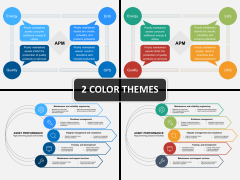
Asset Performance Management PowerPoint and Google Slides Template
(11 Editable Slides)
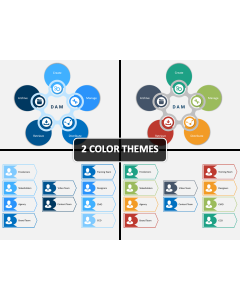
Digital Asset Management PowerPoint and Google Slides Template
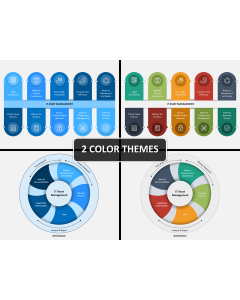
IT Asset Management PowerPoint and Google Slides Template
(8 Editable Slides)

Strategic Asset Management PowerPoint and Google Slides Template
(6 Editable Slides)
We bring to you professionally created, pre-designed PowerPoint Asset Management Template. Built by a team of field experts, the set is perfect for immediate use. There is absolutely nothing to be done from the scratch.
Graphically bold and really creative slides on the set give your message a visible boost. The set doesn't just make it easy for you to communicate your point but adds more power to every word you say. Thoroughly versatile and appropriately flexible, the set is best for all industry types, business size and variety of departments and verticals within a business. Most slides on the set offer pentagon shaped object that fits well for representing all kinds of assets both tangible and intangible.
Pick up any of your assets whether it is related to transport, energy and utilities or it deals with the telecommunication and manufacturing, the set is dependable. You can demonstrate all the various aspects of the management. These include preparation and installation, maintenance, inventory, control, contract, disposal and so on.
Asset Management can be defined as a system that makes sure that the various asset-related actions and activities are undergone systematically. All the actions such as deployment, operation, maintenance, enhancement and even disposal of the assets are part of it, where the word ‘assets' may refer both to tangible and intangible material. The aim is to do it all in most cost-efficient and dynamic manner. The term is quite common in the financial world that comprises of special companies and businesses that specifically handles and manages the investments on the behalf of other business entities.
Create compelling presentations in less time
Research Report
The future of asset management
5-MINUTE READ

Mass customization, industrial-strength technology, shifts in the workforce—welcome to the future of asset management. One of the big questions confronting investment firms today is: With so much change, how can you proactively assemble the right vision, strategy and capabilities needed to invent your company’s future?
Today’s evolving business and technology landscape requires investment firms to take a 360° approach to transformation, including reinventing the client experience, reimagining how data flows across the organization, and integrating technology into investment decision-making and product capabilities.
While it could be tempting for firms to retreat to what they know, the events of 2020 highlighted the need for a different path. If asset managers take a clear-eyed perspective and embed innovation into their organization’s DNA, they could emerge as winners in 2025.
Meet tomorrow’s asset management leader
Business savviness combined with the ability to forge trust, turbo charge technology and create hyper-relevant customer experiences at scale is a new key core competency. What do we think asset management will look like in 2025?
- Asset managers will be more responsive to client needs on the digital level.
- The personal relationship with an advisor will erode and investors will take charge.
- Firms will be mostly cloud-based and AI-operated.
- Corporate responsibility will become a global priority. New tools will empower millions globally to participate.
- There will be much more active investing and customization, and AI will play a huge role in differentiation.
Accenture conducted field research across North America in late 2020 to better understand asset managers' priorities for today, tomorrow and into 2025. The survey included 250 senior executives at asset management firms—including institutional, retail, alternative and hedge funds. Responses were wide-ranging:
of executives agree that an asset manager’s technology, data and digital capabilities will be differentiators in 2025.
of executives state that “customization for the masses” as an investment strategy will define the next five years.
of executives believe that brand and purpose are important differentiators in the asset management industry.
of executives state that their firm is actively looking to expand into new investment products and strategies.
of executives intend to transform their product distribution value chain within the next five years.
of executives state that their investment capabilities will become more important than the products they offer.
A 360° look at asset management in 2025
To help support your decision making at this crucial juncture, we’ve created a future-oriented analysis that looks at six aspects of the asset management model: brand, products, sales and distribution, investment capabilities, investment operations and talent and culture. This analysis examines how these aspects stand on their own and also how they are interconnected.
- Brand: You are who your customers think you are Tell a compelling story about your brand that aligns with customer needs. Follow through on it by making it easy for customers to achieve their goals.
- Products: Investor expectations are changing Extend products and services beyond traditional boundaries. Know your customers and provide innovative offerings that meet their specific needs.
- Distribution: Provide hyper-relevant experiences Reimagine client interactions, create a seamless experience and build trust by breaking down organizational silos supported by data and technology.
- Investment capabilities: New tech, new alpha Pave a path toward better returns with AI, analytics and alternative data. Technology fuels the agility that could keep you ahead of the pack.
- Investment operations: Operate intelligently Build a best-in-breed, innovative technology engine capable of delivering value-generating, customer centric processes at scale.
- Talent: Humans + machines work better together Transform your workplace to deliver a superior, digital age employee and customer experience by blending the best mix of humans and technology.
Don’t wait for change to come… invent it
Thriving in this moment and beyond requires ambitious asset management leaders who are not content with business as usual but who are willing to up-end convention and invent their future. Opportunities exist for those willing to break from the mentality of “that’s how we’ve always done things” and instead design what comes next.
Related insights
- Asset management in the cloud
- The power of data-driven asset management
William Monaghan
Senior Manager – Asset Management
Caroline Chambers
Senior Manager – Asset Management
Ross Tremblay
Managing Director – Asset Management
- Plan & Pricing
Asset Management PowerPoint Template
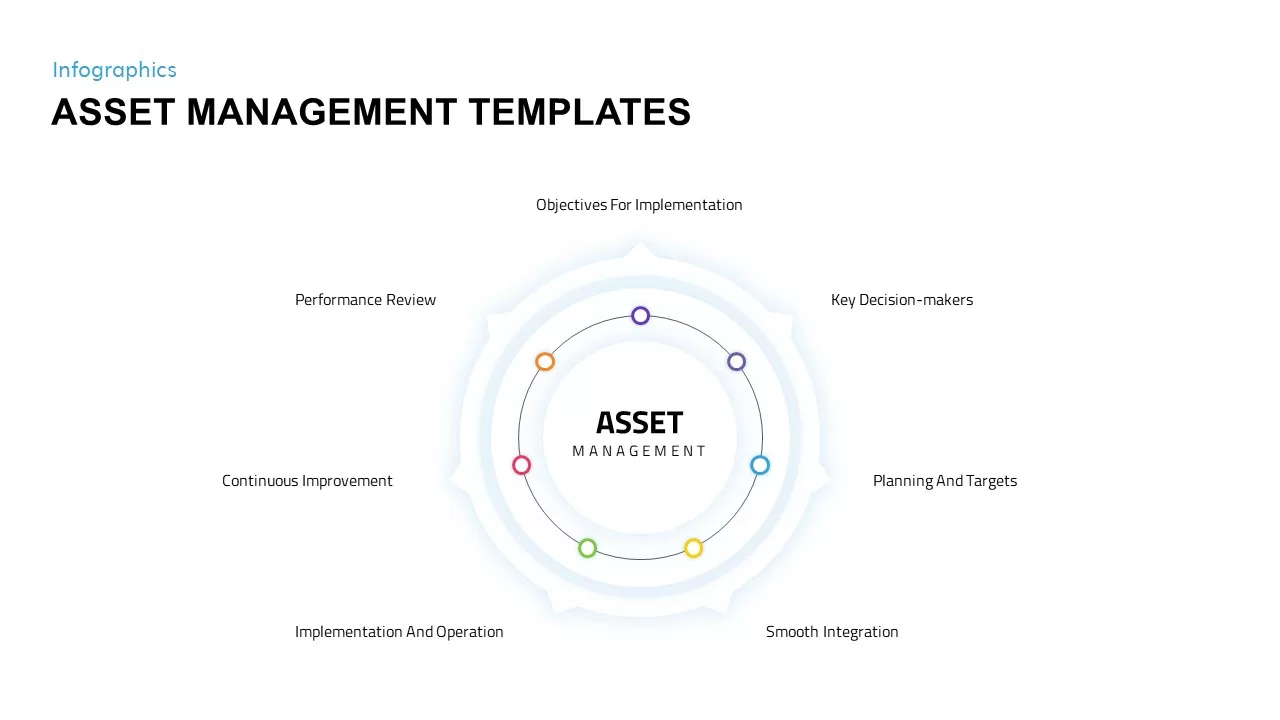
Asset management template for PowerPoint is a financial presentation slide showing elements of how a company can keep track of its assets. Most often, this concept is a discussion topic in each household. However, the possibilities and techniques of asset management are being used by professional financial advisors. All human beings are willing to create wealth without damaging wealth that already exists. This indicates loss-aversion is the prime aspect that withdraws millions of people from investing in risky sectors. Asset management professionals will have precise answers to build wealth by healthy investments. So, this professional asset management diagram could be a useful tool for financial advisors and portfolio managers. There are numerous explanations why businesses should be concerned about asset management. Here, the financial template shows concepts such as asset management overview, solutions, and elements.
The cover slide of asset management PowerPoint template shows the asset management process with seven sub-headings. That includes objectives for implementation, key decision-makers, planning and target, smooth integration, implementation and operation, continuous improvement, and performance review. The second slide that named asset management solutions shows five topics. There is a timeline template showing an asset management overview as it is a summarized presentation. All these slides are picture-perfect creations. So, it will be concluded all elements that are integrated into the topic of asset management. With these infographic charts and illustrations, you can display the model of investment and planning.
Asset management templates contain eight slides on black and white background. 4 of them are variant models of the master theme. It will help users to create presentations up to 8 drops. So, users can add more topics apart from the default asset management concepts. Slidebazaar has many varieties of business PowerPoint decks, including financial and investment presentations. You can add sophisticated PowerPoint templates to your wide range of collections for a colourful business display.
Related Templates
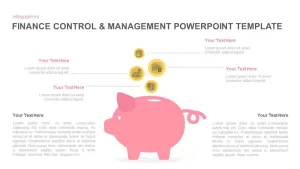
Financial Management PowerPoint Template and Keynote Slide
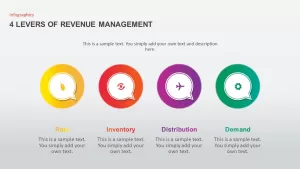
4 levers of Revenue Management PowerPoint Template
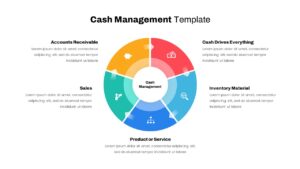
Cash Management PowerPoint Template
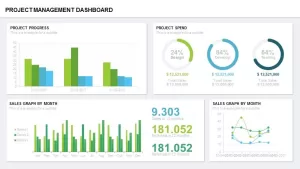
Project Management Dashboard PowerPoint Template and Keynote Template
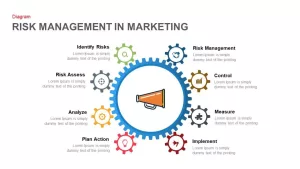
Risk Management in Marketing PowerPoint Template and Keynote Template
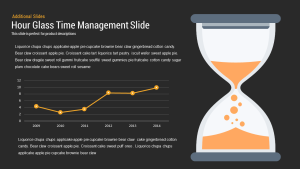
Hourglass Time Management PowerPoint Template and Keynote Slide
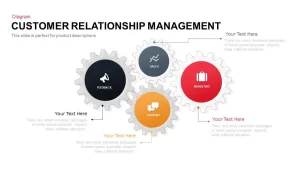
Customer Relationship Management PowerPoint Template
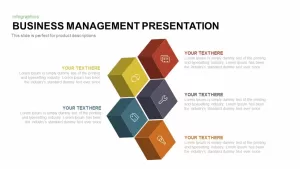
Business Management PowerPoint Template and Keynote slide
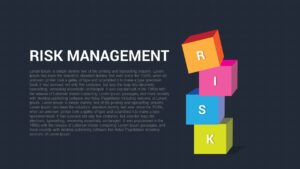
Risk Management PowerPoint Template and Keynote Slide
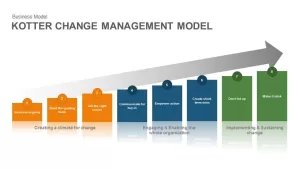
Kotter Change Management Model Template for PowerPoint and Keynote Presentation

Customer Relationship Management Template for PowerPoint and Keynote
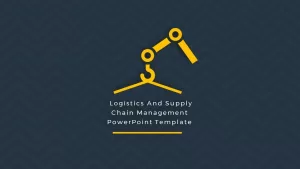
Supply Chain Management PowerPoint Template and Logistics
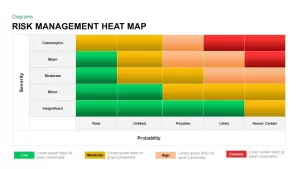
Risk Management Heat Map Template for PowerPoint And Keynote
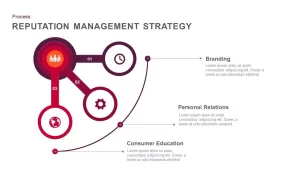
Reputation Management Strategy Template for PowerPoint & Keynote
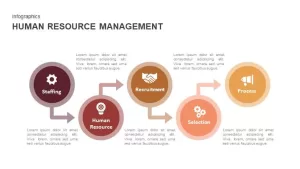
Human Resource Management Template for PowerPoint and Keynote
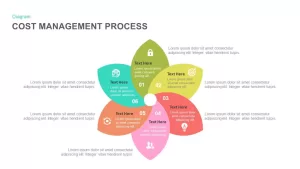
Cost Management Process Template for PowerPoint and Keynote
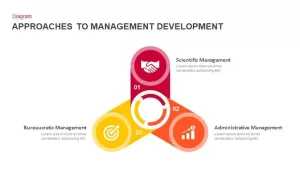
Approaches to Management Development PowerPoint Template and Keynote
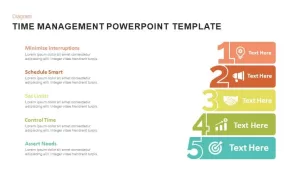
Time Management PowerPoint Template and Keynote Slide
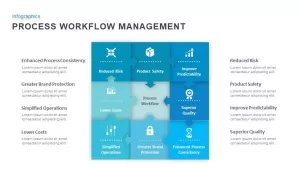
Process Workflow Management Template for PowerPoint and Keynote
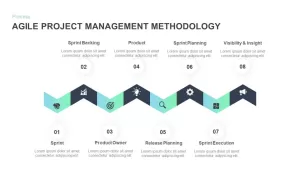
Agile Project Management Methodology PowerPoint Template and Keynote Slide
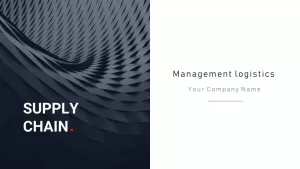
Supply Chain Management PowerPoint Template
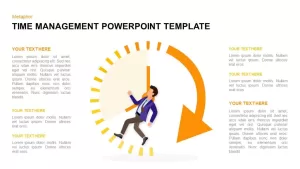
Time Management Template for PowerPoint and Keynote
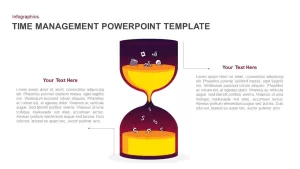
Time Management PowerPoint Template and Keynote Diagram
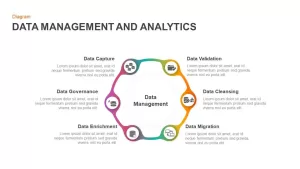
Data Management and Analytics Template for PowerPoint & Keynote
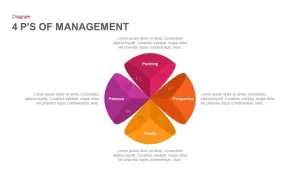
4 P’S of Management PowerPoint Template & Keynote
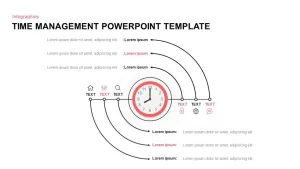
Time Management PowerPoint Template & Keynote Diagram
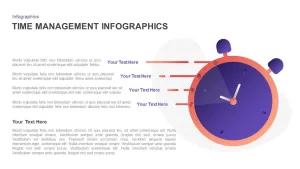
Infographic Time Management PowerPoint Template & Keynote
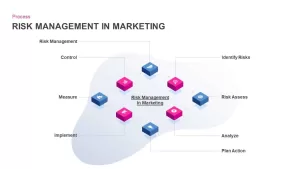
Risk Management in Marketing – Template for PowerPoint & Keynote

Time Management Infographic Template for PowerPoint & Keynote
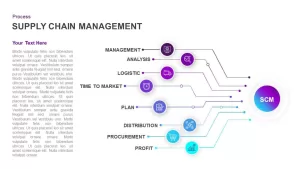
Supply Chain Management Template for PowerPoint & Keynote
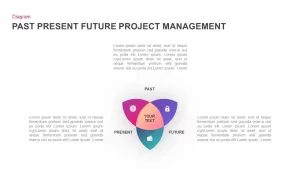
Past Present Future Project Management Template for PowerPoint & Keynote
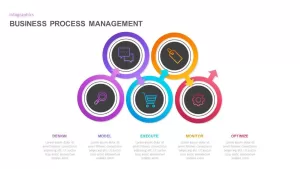
Business Process Management PowerPoint Template
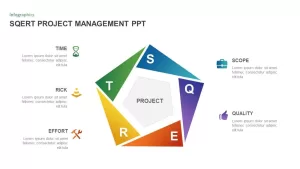
SQERT Project Management PowerPoint Template
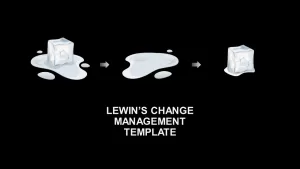
Lewin’s Change Management Model PowerPoint Template
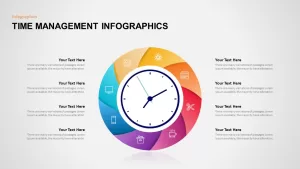
Time Management PowerPoint Template
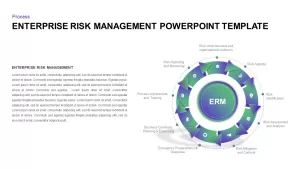
Enterprise Risk Management PowerPoint Template
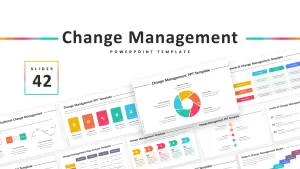
Change Management PowerPoint Template
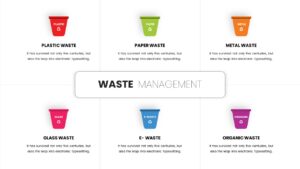
Waste Management PowerPoint Template
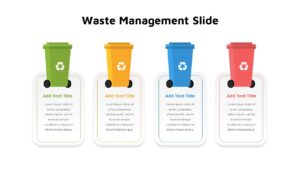
Waste Management Template for PowerPoint
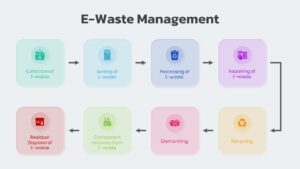
E-Waste Management PowerPoint Template
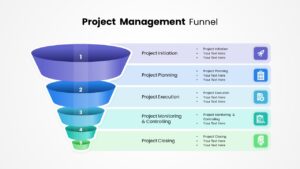
Project Management Funnel Template PowerPoint
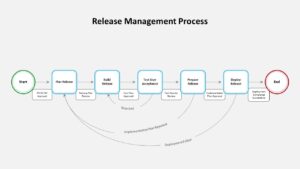
IT Agile Release Management Process PowerPoint Template
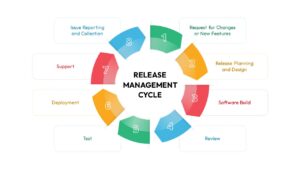
IT Agile Release Management Lifecycle PowerPoint Template
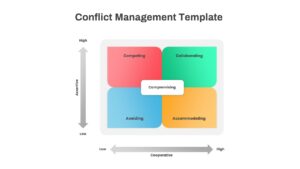
Conflict Resolution Management PowerPoint Template
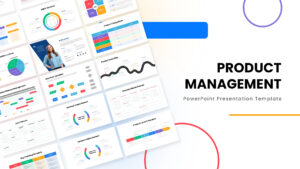
Product Management PowerPoint Template
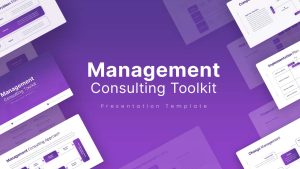
Management Consulting Toolkit PowerPoint Template
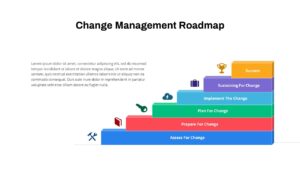
Change Management Roadmap PowerPoint Template
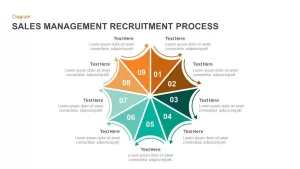
Sales Management & Recruitment PowerPoint and Keynote Slides
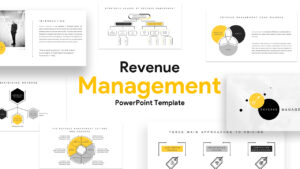
Revenue Management Templates for PowerPoint & Keynote
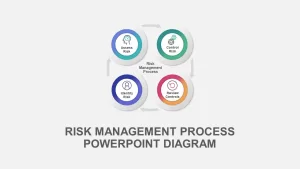
Risk Management Process Diagram for PowerPoint
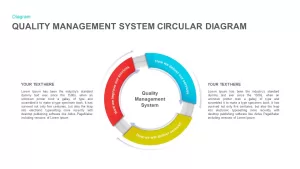
Quality Management System Circular Diagram for PowerPoint
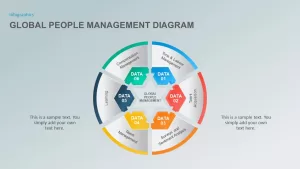
The Global People Management Diagram for the PowerPoint Presentation
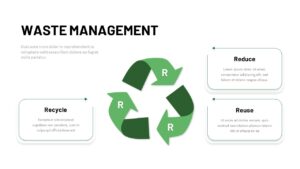
Waste Management PowerPoint Slide
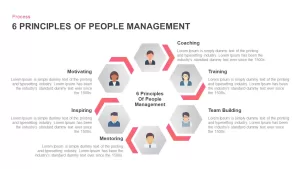
6 Principles of People Management Ppt Template
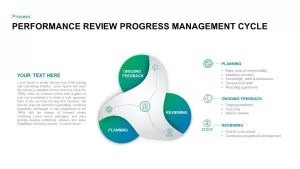
Performance Management Review Process Template
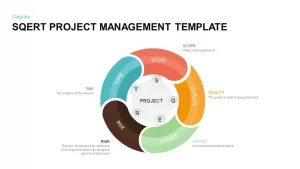
SQERT Project Management Model Template
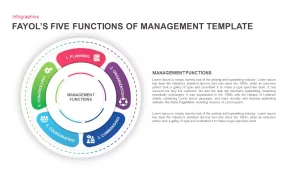
Fayol’s Five Functions Of Management Template
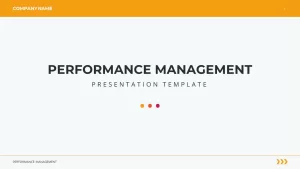
Performance Management Presentation Template
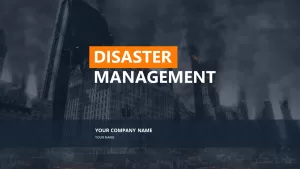
Disaster Management Template
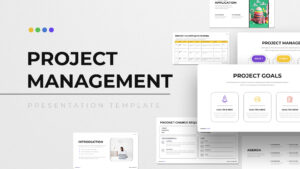
Project Management Presentation Template
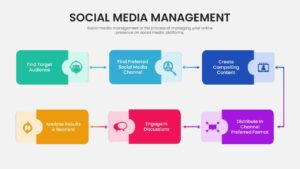
Social Media Management Template
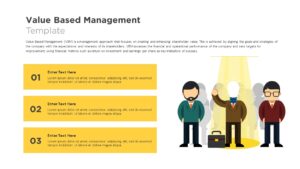
Value Based Management Template
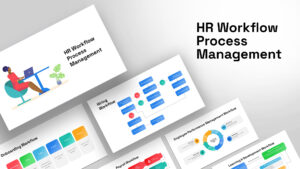
HR Workflow Process Management PPT Template
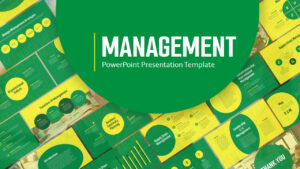
Free Management Deck Template
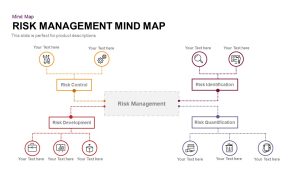
Risk Management Mind Map PowerPoint Template
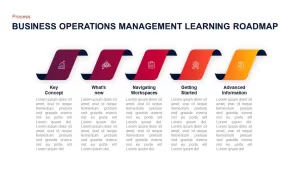
Business Operations Management Learning Roadmap Diagram
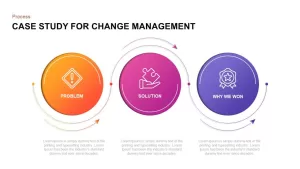
Case Study of Change Management Ppt Slide
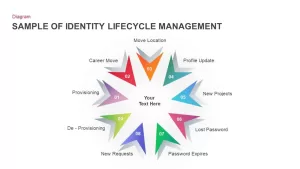
Identity Lifecycle Management Sample Diagram Ppt Slides
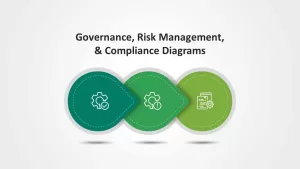
Governance, Risk Management and Compliance Slide Templates
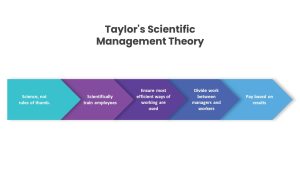
Taylor’s Scientific Management Theory PPT
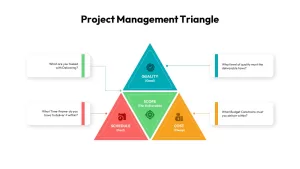
Project Management Triangle
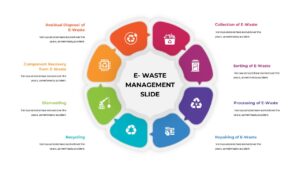
E-Waste Management Slide
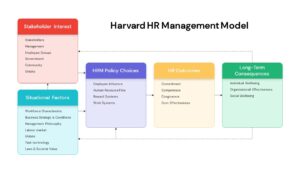
Harvard HR Management Model
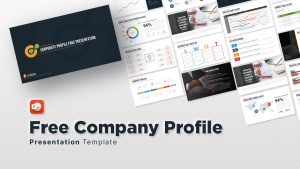
Company Profile PowerPoint Template Free
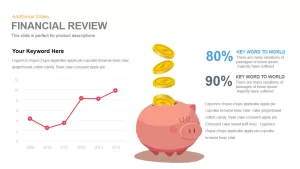
Financial Review Template for PowerPoint and Keynote
Finance Flat Dollar Coin Icon Representation PowerPoint and Keynote Template
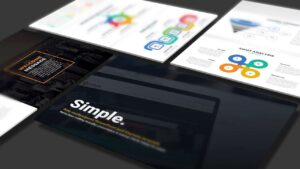
Simple Multipurpose PowerPoint Template and Keynote Free
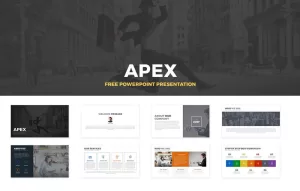
Apex Free PowerPoint Template and Keynote Slide
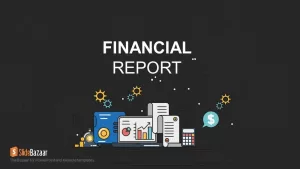
Financial Report PowerPoint Template & Keynote

Ultimate Free PowerPoint Template Download
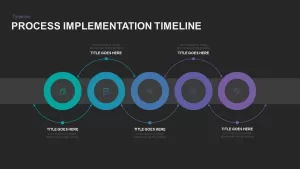
Process Implementation Timeline PowerPoint Template
UNICON – Business Presentation PowerPoint Template
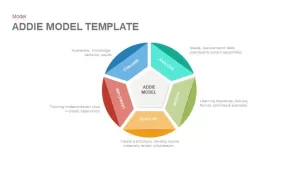
ADDIE Model PowerPoint Template and Keynote Slide
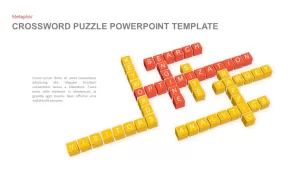
Crossword Puzzle PowerPoint Template
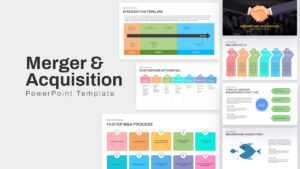
Merger and Acquisition PowerPoint Template and Keynote
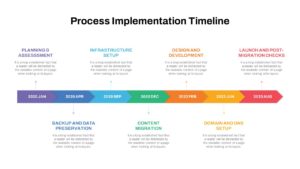
Process Implementation Timeline Template for PowerPoint & Keynote
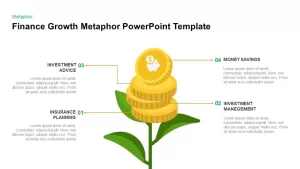
Financial Growth Template for PowerPoint & Keynote
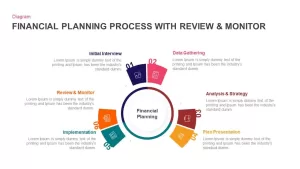
Financial Planning Process With Review and Monitor Template for PowerPoint & Keynote
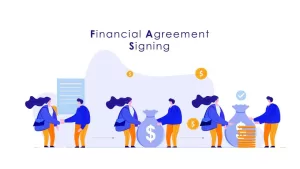
Financial Agreement Signing PowerPoint Template
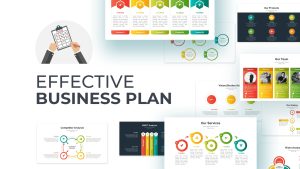
Effective Business Plan PowerPoint Template
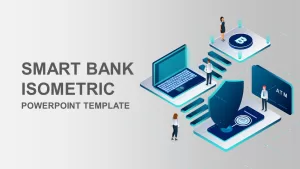
Smart Bank Isometric PowerPoint Template
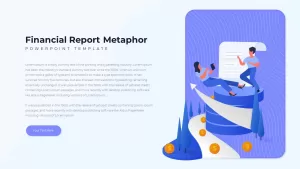
Financial Report Metaphor PowerPoint Presentation Template

Company Profile PowerPoint Presentation Template
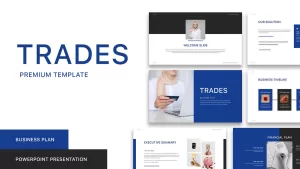
Trading Business Plan PowerPoint Template

Finance Advisor PowerPoint Template
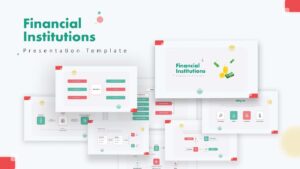
Financial Institution PowerPoint Template
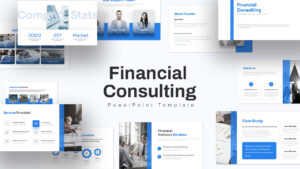
Finance Consulting PowerPoint Template
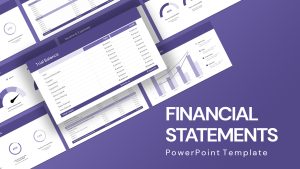
Financial Statement PowerPoint Template
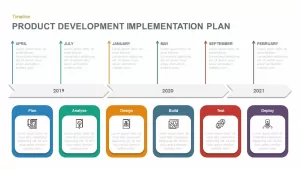
Product Development Implementation Plan PowerPoint Diagram
Can't find what you're looking for.
Try using our search feature to find exactly what you need. Just type in what you are searching for and we will do the rest!
- Skip to main content
- Skip to search
- Skip to footer
Products and Services
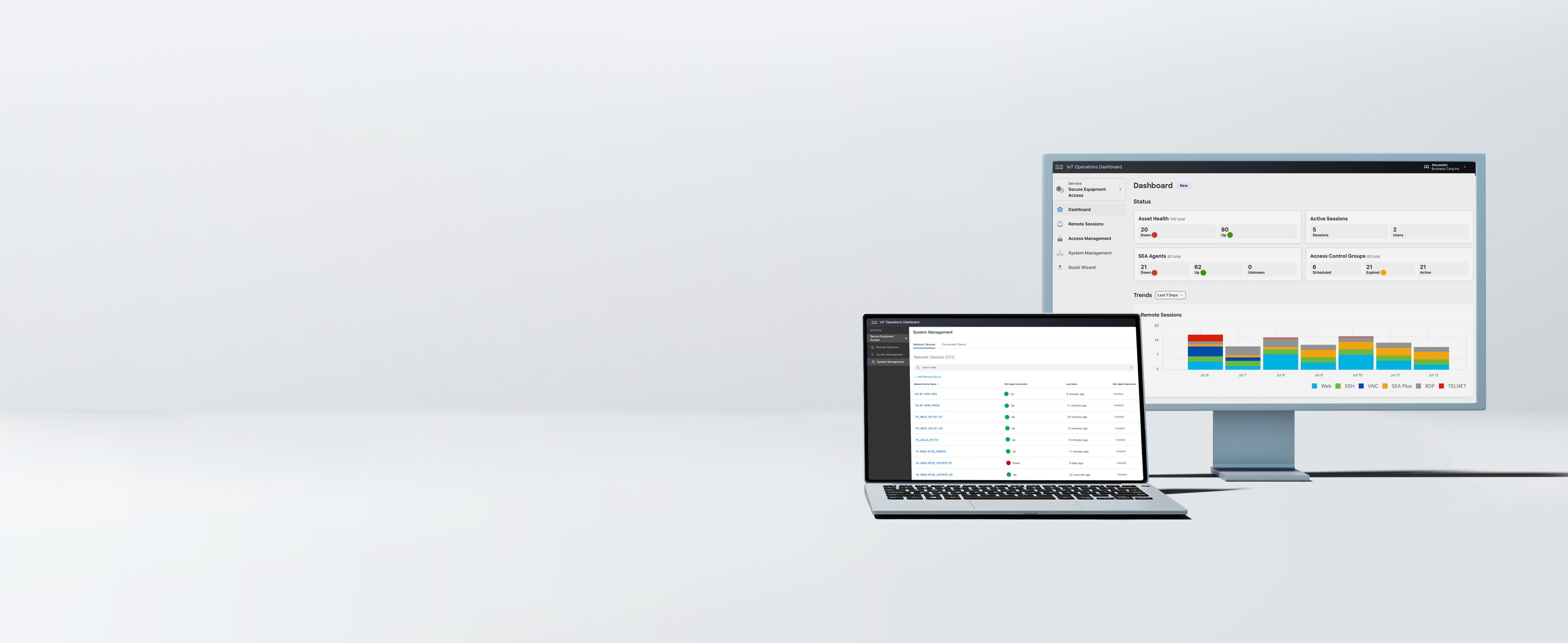
Cisco IoT Operations Dashboard
Secure your ot assets.
Cloud-delivered services for secure access, security posture, data orchestration, and monitoring for operational technology (OT) assets.
Choose your services; easily deploy from the cloud.
Cisco secure equipment access.
Help ensure secure remote access to your ICS and OT assets by enforcing zero-trust network access (ZTNA).
Explore Secure Equipment Access >
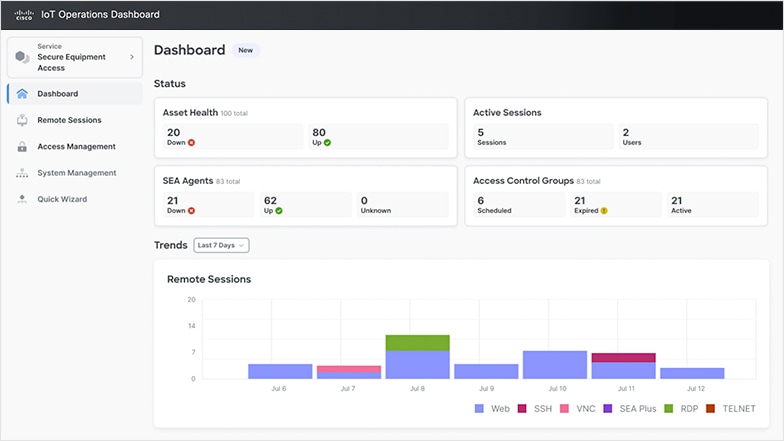
Cisco Cyber Vision
Understand your security posture with visibility into connected industrial assets and their potential security risks.
Read Cisco Cyber Vision At-a-Glance>
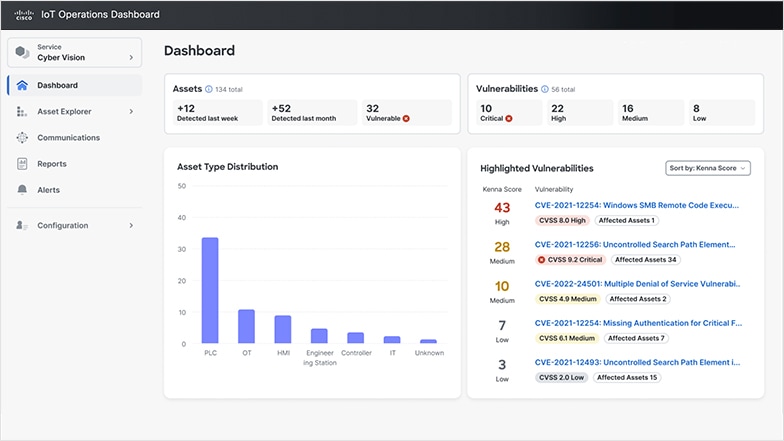
Cisco Edge Intelligence
Easily access and process data from industrial assets, and transfer to multicloud applications.
Explore Cisco Edge Intelligence >
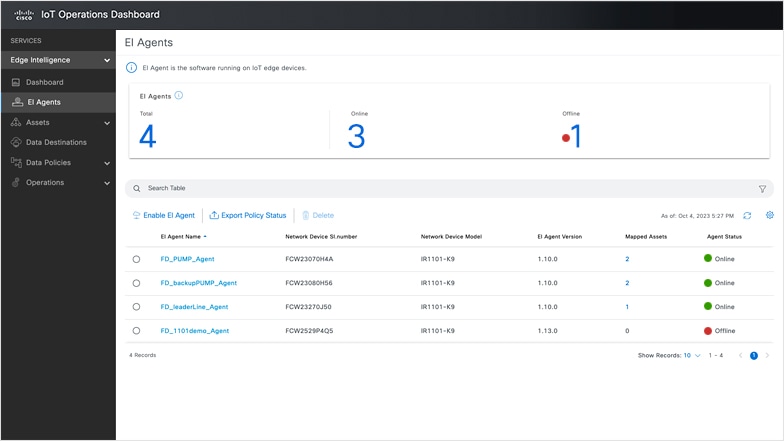
Cloud-delivered security
Gain security with cloud-delivered Secure Equipment Access (SEA) and Cyber Vision in IoT Operations Dashboard.
What customers are saying
Optimizing energy usage with data insights.

Cisco IoT Operations Dashboard is a critical part of the solution. It provides template-based, zero-touch deployment, connectivity monitoring, management of the lifecycle of applications on the industrial routers and it allows us to remotely configure and upgrade Energybox equipment at customer locations without the need for site visits. And all of us are making significantly fewer site visits to check on equipment and other assets. Tony Carrella, president Energybox
Easily manage your industrial IoT
If you're ready to take charge of your industrial IoT and drive digital transformation, contact our sales team.
Newly Launched - World's Most Advanced AI Powered Platform to Generate Stunning Presentations that are Editable in PowerPoint

Powerpoint Templates
Icon Bundle
Kpi Dashboard
Professional
Business Plans
Swot Analysis
Gantt Chart
Business Proposal
Marketing Plan
Project Management
Business Case
Business Model
Cyber Security
Business PPT
Digital Marketing
Digital Transformation
Human Resources
Product Management
Artificial Intelligence
Company Profile
Acknowledgement PPT
PPT Presentation
Reports Brochures
One Page Pitch
Interview PPT
All Categories

Asset management process business operations analysis examples ppt information
Our Asset Management Process Business Operations Analysis Examples Ppt Information are topically designed to provide an attractive backdrop to any subject. Use them to look like a presentation pro.
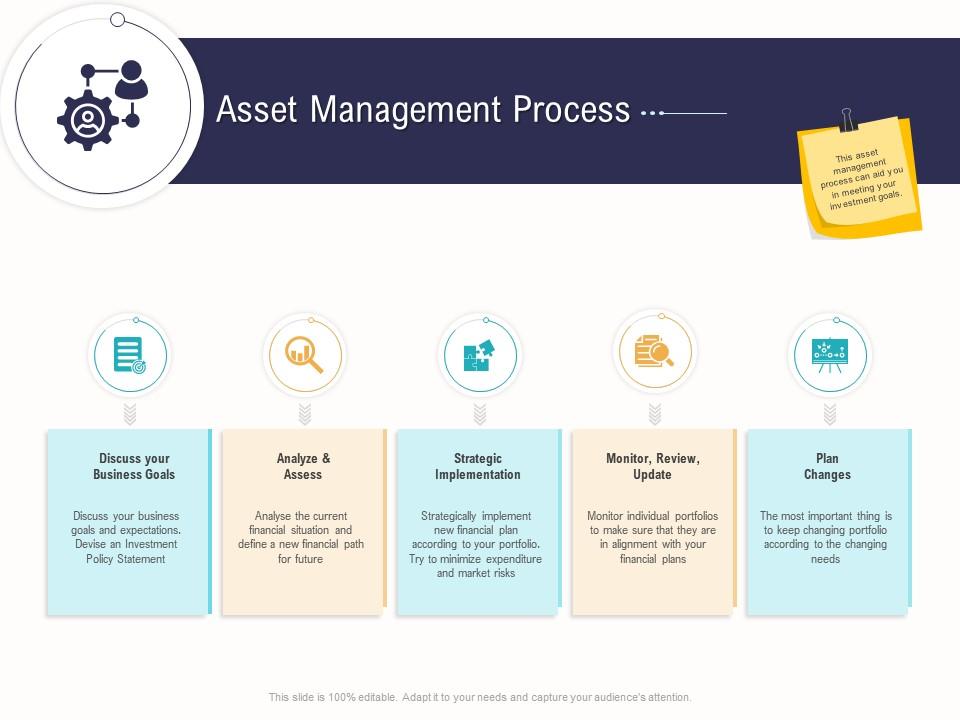
- Add a user to your subscription for free
You must be logged in to download this presentation.
PowerPoint presentation slides
Introducing Asset Management Process Business Operations Analysis Examples Ppt Information to increase your presentation threshold. Encompassed with five stages, this template is a great option to educate and entice your audience. Dispence information on Discuss Your Business Goals, Analyze AND Assess, Strategic Implementation, using this template. Grab it now to reap its full benefits.

People who downloaded this PowerPoint presentation also viewed the following :
- Diagrams , Business , Strategy , Icons , Business Slides , Flat Designs , Linear Process Diagrams , Process Management
- Discuss Your Business Goals ,
- Analyze And Assess ,
- Strategic Implementation
Asset management process business operations analysis examples ppt information with all 2 slides:
Use our Asset Management Process Business Operations Analysis Examples Ppt Information to effectively help you save your valuable time. They are readymade to fit into any presentation structure.

Ratings and Reviews
by Cristopher Cole
September 2, 2021
by Cornelius Alexander
by Kyle Anderson
by Cornell Hamilton


IMAGES
VIDEO
COMMENTS
1) Executive summary. Our executive summary section provides you with a well-crafted and comprehensive template that empowers you to curate your asset management brand, supplying the details in a more attractive way. Integrated into the segment are some core subsections that serve to make your executive summary more engaging and impactful.
Deliver a credible and compelling presentation by deploying this 4 Step Gear Asset Management Business Continuity Social Media. Intensify your message with the right graphics, images, icons, etc. presented in this complete deck. This PPT template is a great starting point to convey your messages and build a good collaboration.
Download Asset Management PowerPoint Templates and Slides. Asset management is crucial for managing an investment portfolio. Asset management is also done in IT to handle daily strategies hardware and software. IT management is crucial for organizations to ensure smooth and efficient operations. To make this task hassle-free, SlideTeam has ...
Personal asset management slide design. Easy editable data driven charts (pie, bar, line) ... Business management PPT Templates. Easy to change colors Shapes and text are 100% editable Replaceable the image into placeholder Professional business presentation. Business 5 slides. P G. Premium.
Asset Management professionals perform the service of increasing total wealth over time by acquiring, maintaining, and trading investments that have the potential to grow in terms of value. As asset managers, you are required to make decisions on behalf of your clients in good faith. Therefore, we understand how crucial it is for you to present your data systematically.
This template is 100% editable and can be customized with all PowerPoint versions. The Asset Management PowerPoint Template starts with an impressive slide containing an image of a laptop user working on data. The following slide is for presenting the table of contents for the presentation. Next, there are different slides that users can ...
Download Asset Management PowerPoint templates (ppt) and Google Slides themes to create awesome presentations. Free + Easy to edit + Professional + Lots backgrounds. Top . ... 4 Ps of Business Management Diagram By PoweredTemplate. 4.6 of 5 (160) 206 Save. Similar. Company Management PowerPoint Template By PoweredTemplate. 4.6 of 5 (539) 826 Save.
Formats. 16:9. Simple Green Elegant Business Finances Waves Minimalist Abstract Company Profile Background Crypto Economy Deluxe Management Editable in Canva. With this simple wavy template your company will sell itself! Download it for Google Slides and PowerPoint.
Business Diagram Circular Arrows For Brand Asset Management Presentation Template. This diagram has been designed with graphics of circular arrows. This diagram slide contains the concepts of brand assets management. Download this diagram slide to make impressive presentations. Slide 1 of 7.
Asset Management Presentation. The document discusses enterprise asset management. It defines assets and their nature, including human, financial, information, and physical assets. Asset management aims to optimize asset performance, risks, and costs over their lifecycles to achieve organizational goals. The document outlines key elements of ...
This slide is part of a presentation by Morgan Stanley and is intended to be viewed as part of that presentation. The presentation is based on information ... Asset Management 14% MSIM Is a Key Business of Morgan Stanley STRENGTHS OF MSIM TODAY 12% 19% 58% Asset Management 11% Net revenues Fiscal year 2005=$26,778 million
Business asset management, a discipline that extends beyond the financial management of stocks and bonds, encompasses the strategic oversight of all valuable resources within an organization. This broad spectrum includes everything from tangible machinery and facilities to intangible assets like software and intellectual property. Effective ...
Below you'll see thumbnail sized previews of the title slides of a few of our 20 best asset management templates for PowerPoint and Google Slides. The text you'll see in in those slides is just example text. The asset management-related image or video you'll see in the background of each title slide is designed to help you set the stage ...
Explore our Asset Management Presentation Template. It guides through selecting, assessing, and managing assets effectively, ending in a compelling presentation. 1. Identify the type of assets to be included in the presentation. Gather data on the identified assets. Assess each asset's performance.
Slide 1 of 5. Asset management business plan inspection and monitoring. Slide 1 of 2. Asset management business plan ppt powerpoint presentation ideas format cpb. Slide 1 of 6. Real Estate Asset Management Business Pricing Plan. Slide 1 of 10. Financial Modeling And Valuation For Asset Management Business Plan In Excel BP XL. Slide 1 of 6.
Asset management ensures that your company can continue to grow and expand with the correct use of assets. It will help keep your business on track, manage risk, and more. Asset management is a systematic process to cost-effectively procure, maintain, upgrade, and dispose of organizational assets.
Find out more about business asset management. For growing organisations, managing numerous assets can become overwhelming without access to a scalable asset management solution. ... simplifying the presentation of information. Financials is a scalable and innovative technology that can accommodate your growing asset portfolio now and into the ...
4:3. We bring to you professionally created, pre-designed PowerPoint Asset Management Template. Built by a team of field experts, the set is perfect for immediate use. There is absolutely nothing to be done from the scratch. Graphically bold and really creative slides on the set give your message a visible boost.
For more asset management strategies, visit wwwassetworksom pt 214 ssets ts esee Asset Management 101: A Step by Step Asset Management Plan 6 Completing an Asset Inventory An asset inventory or register is your starting point and will become the basis of your Asset Management plan. You need to know what assets
Meet tomorrow's asset management leader. Business savviness combined with the ability to forge trust, turbo charge technology and create hyper-relevant customer experiences at scale is a new key core competency. What do we think asset management will look like in 2025? Asset managers will be more responsive to client needs on the digital level.
Asset management templates contain eight slides on black and white background. 4 of them are variant models of the master theme. It will help users to create presentations up to 8 drops. So, users can add more topics apart from the default asset management concepts. Slidebazaar has many varieties of business PowerPoint decks, including ...
Slide 1: This slide introduces Digital Asset Management.State Your Company Name and begin. Slide 2: This slide presents Table of Content for the presentation. Slide 3: This slide highlights title for topics that are to be covered next in the template. Slide 4: This slide covers introduction about digital media, how it has evolved till now and facts about social media content.
Cisco IoT Operations Dashboard is a critical part of the solution. It provides template-based, zero-touch deployment, connectivity monitoring, management of the lifecycle of applications on the industrial routers and it allows us to remotely configure and upgrade Energybox equipment at customer locations without the need for site visits.
Introducing Asset Management Process Business Operations Analysis Examples Ppt Information to increase your presentation threshold. Encompassed with five stages, this template is a great option to educate and entice your audience. Dispence information on Discuss Your Business Goals, Analyze AND Assess, Strategic Implementation, using this template.